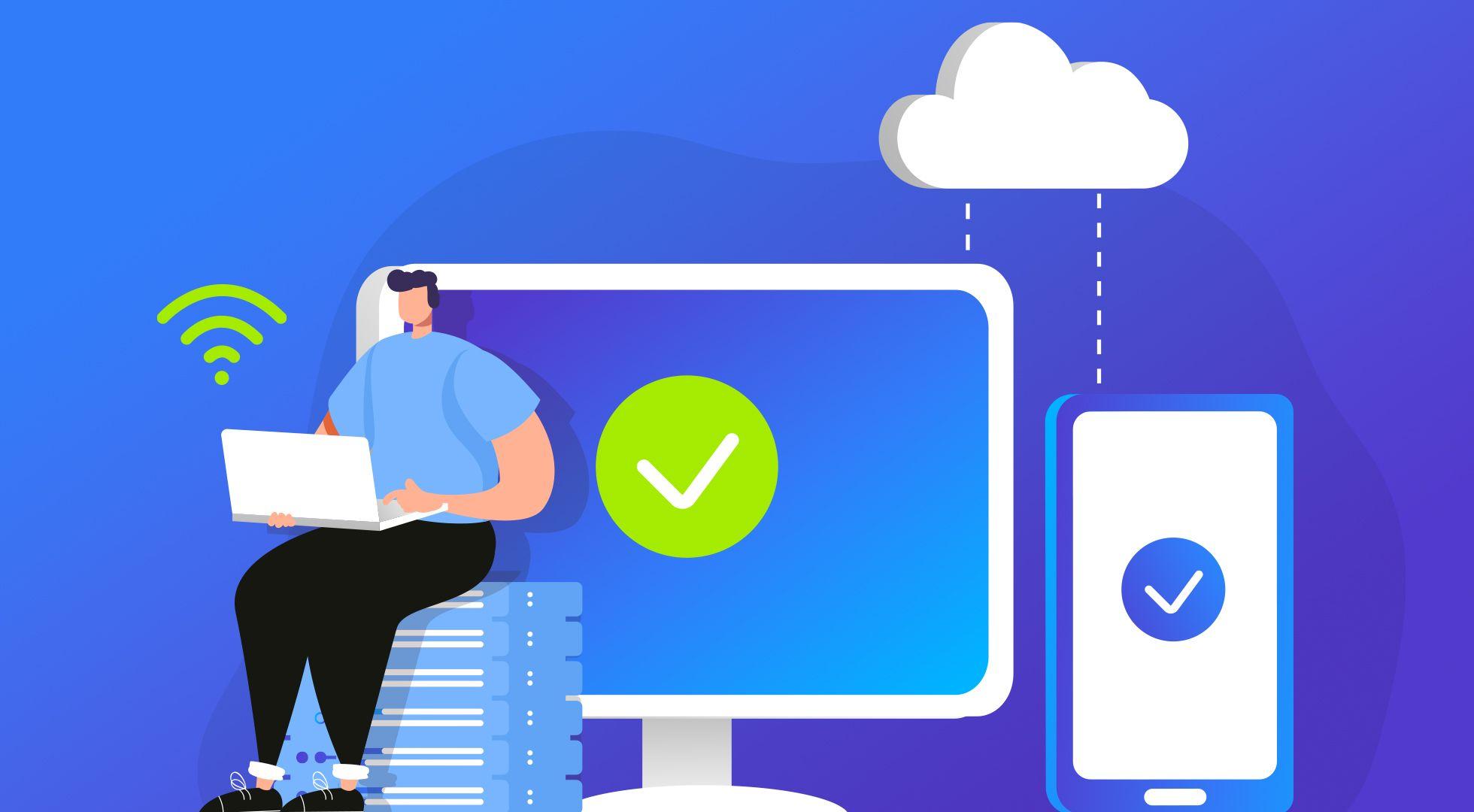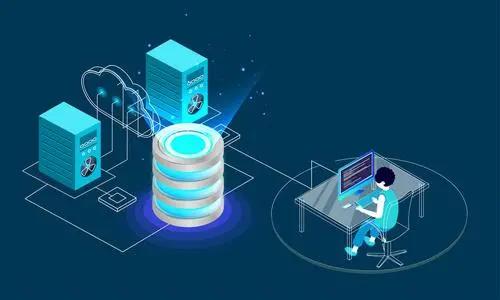
Mastering Digital Speed and Security: An In-Depth Guide to Content Delivery Networks (CDNs) and Proxies
Introduction The digital era has made content accessibility a cornerstone of user experience, elevating the importance of how quickly and reliably this content reaches its audience. Enter Content Delivery Networks (CDNs), the unsung heroes that act as the backbone of the internet, optimizing both speed and security for websites. This in-depth guide aims to unravel the complex ecosystem of CDNs, highlight their multitude of advantages, and briefly introduce their relationship with proxy servers. A Comprehensive Definition of Content Delivery Network (CDN) A Content Delivery Network, more commonly known by its acronym CDN, is a system of strategically distributed servers that work in collaboration to provide quicker access to internet content. This network is not just a single entity but an assemblage of multiple interconnected components. These include proxy servers, data centers, and even sophisticated software algorithms, all operating in a synchronized manner to deliver optimum performance and reliability. Think of a CDN as an expansive global delivery system. At its core, a CDN is designed to transfer various types of digital assets — these range from basic HTML and CSS files, images, and JavaScript libraries, to more complex elements like streaming video and audio files. These digital assets are critical for any website or application to function properly, and their speed of delivery can significantly impact user experience. To make this tangible, consider a scenario where your website's server is located in New York. A user in Tokyo would traditionally experience slower load times compared to someone closer to the server. However, with a CDN in play, your content exists on multiple servers across different continents, including one closer to Tokyo, enabling faster delivery of your website's data to users regardless of geographic location. The Inner Workings: Mechanism Behind CDNs The success of a CDN hinges on its architecture, which is specifically designed to overcome the challenges of latency, packet loss, and network congestion. This architecture revolves around the concept of 'Edge Servers'. These servers are strategically placed in various geographical locations to be as close as possible to the end-user, sometimes even at the ISP (Internet Service Provider) level for ultimate low-latency access. When a user accesses a website, the initial request is intercepted by the CDN. The CDN then determines which edge server is best suited to serve the user's request. Several factors go into this decision, such as the server's proximity to the user, its current load, and health status. Once the optimal server is identified, the content is delivered to the user. There are two primary ways the edge server handles this request: 1. Cached Content: If the content has been recently requested and is stored in the edge server's cache, it will be delivered directly to the user. This is the fastest method of content delivery and the primary advantage of using a CDN. 2. Fetching from Origin Server: If the requested content is not in the edge server's cache (or if it's outdated), the edge server will fetch the most current version from the origin server. Although this involves an extra step, the edge server will usually keep this updated content in its cache for future requests, benefiting subsequent users. Through this decentralized system, CDNs not only drastically reduce the time it takes for content to travel from the server to the user, but they also increase redundancy. This means that even if one server fails, another can take over, ensuring uninterrupted service. In-Depth Benefits of Implementing a Content Delivery Network (CDN) Accelerating Speed and Enhancing Efficiency The core advantage of using a CDN lies in its ability to drastically cut down on latency. When users request data from a website, the round-trip time it takes for a server to acknowledge and respond can result in a noticeable delay. CDNs, with their extensive network of globally distributed servers, minimize this delay by ensuring that the data travels the shortest possible distance. Whether a user is in New York enjoying a video stream, in London downloading a large file, or in Tokyo browsing an image-heavy e-commerce site, a nearby CDN edge server will expedite the content delivery, resulting in significantly reduced load times and a much more fluid user experience. Robust Security Measures to Safeguard Your Content Another compelling reason to implement a CDN is the added layers of security it provides. Notably, CDNs act as a buffer between your origin server and incoming traffic, thereby offering a first line of defense against Distributed Denial of Service (DDoS) attacks. These attacks aim to overwhelm a server with a flood of internet traffic, and CDNs can distribute this traffic across its wide network, thereby mitigating the attack's impact. Additionally, most CDNs offer Web Application Firewalls (WAFs), which inspect incoming traffic for malicious activity and filter out anything deemed hazardous. Further solidifying their security credentials, many CDNs come pre-equipped with SSL/TLS certificates. These certificates provide dual functions of authentication and encryption. Authentication ensures that the data is being sent to the intended recipient, and encryption makes sure that the data can only be read by that recipient. This effectively secures the information from potential eavesdropping or data tampering. Unparalleled Reliability and Content Availability When it comes to high availability and reliability, CDNs are a powerhouse. By virtue of their design, they distribute data and network traffic across multiple servers, which reduces the load and stress on any single server. This distribution mechanism becomes particularly useful during traffic surges or unexpected hardware failures. If one server in the CDN network experiences an outage, the system reroutes the user requests to another operational server, thereby ensuring uninterrupted content delivery. Who Stands to Benefit the Most from a CDN? eCommerce Platforms For eCommerce websites, speed and reliability are not just features but necessities. Slow page loads can lead to cart abandonment and reduced sales. With a CDN, businesses can ensure that their online stores are accessible and speedy for a global audience. Plus, the improved security measures are vital for handling sensitive customer information. Advertising Firms The world of digital advertising demands the quick and efficient delivery of multimedia content. High-quality videos, interactive banners, and other resource-intensive assets can slow down a webpage significantly. By leveraging a CDN, advertising firms can eliminate these bottlenecks, ensuring that their content not only reaches a broader audience but does so with optimized load times. Online Gaming Companies The gaming industry constantly pushes the boundaries of what's possible in terms of graphical fidelity and real-time user interaction. These high-quality experiences require large amounts of data to be transferred quickly. Here, CDNs provide what are known as "push zones," specialized areas on edge servers where large data files can be stored for quick access, thereby ensuring low-latency, high-quality gaming experiences. Media and Entertainment In the streaming wars, speed is king. Services like Netflix and Spotify have massive libraries that need to be instantly accessible to users around the globe. CDNs enable these services to store frequently accessed content on edge servers located close to their audience, ensuring that movies start faster, music plays without interruption, and high-definition content streams smoothly. Understanding Proxies(LIKE.TG Proxy Provider): A Comprehensive Primer Proxies act as middlemen in the data communication channel between a user and the internet. Unlike CDNs, which focus on speed and global distribution, proxies emphasize user anonymity and controlled access. When you browse the internet through a proxy, your request goes to the proxy server first. The server then forwards it to the destination website. When the website sends back the data, the proxy relays it to you, thereby keeping your presence somewhat anonymous. This is particularly useful for bypassing geo-restrictions or corporate firewalls. While CDNs and proxies both aim to improve speed and security, they do so at different scales and for different primary objectives. A CDN aims for global distribution and is tailored for high-speed content delivery to a large audience. On the other hand, proxies are often used on a more individual or organizational level, focusing on localized control over web traffic and restricted access to specific content. They're the perfect complement to CDNs when you require more nuanced control over who can access what and how quickly they can do it. Key Factors to Consider When Choosing Your CDN Provider Selecting a CDN provider is an important decision that can have significant impacts on your web performance. Here are some critical elements to weigh in your choice: Push vs. Pull Functionality CDNs typically offer two caching methodologies—push and pull. In the push model, your website's data is actively sent to the CDN servers, while in the pull model, the CDN automatically fetches data from your site as needed. Each has its merits; push is often faster but may require more initial setup, whereas pull is easier to implement but can sometimes result in slower first-time content delivery. Choose based on how frequently your content changes and how much control you wish to have over content distribution. Origin Shield: An Additional Layer of Protection An origin shield acts as an intermediary layer between your original server and the CDN edge servers. By having this extra layer, you reduce the load on your origin server and also add another layer of caching, making content delivery even more efficient. Not all CDN providers offer this feature, so if it aligns with your needs, ensure the CDN you choose provides it. Log Management Capabilities The ability to adequately analyze, monitor, and store logs is crucial for understanding user behavior and optimizing content delivery. Some CDNs offer robust analytics and log management features, allowing you to track performance metrics, user engagement, and even security incidents in real-time. This feature is invaluable for diagnosing issues and planning future content strategies. Cache Controls: Flexibility is Key Different websites have different caching needs. Some might need to frequently update content, requiring shorter cache times, while others might have more static data that can be cached for longer periods. The ability to set custom caching rules and expiration times allows for a more personalized approach to content delivery. Look for a CDN provider that gives you granular control over these settings. Adaptability: One Size Doesn’t Fit All The CDN you choose should be adaptable to a variety of requirements, from asset delivery types to Search Engine Optimization (SEO) strategies. Given that your website or application may have unique needs, such as varying security measures or mobile optimization features, your CDN should be configurable to adapt to these specifics. ConclusionThe digital world spins on the axis of speed, security, and accessibility. Content Delivery Networks (CDNs) and proxies are the cogs and gears that make this possible. While CDNs are the engines driving the rapid and secure distribution of web content across the globe, proxies add a layer of nuanced control and security on a more localized level. Choosing the right CDN involves a deep understanding of what your specific needs are—be it speed, security, or adaptability. Coupled with the smart use of proxies, a robust CDN can supercharge your online presence, whether you're a small business or a global enterprise. As we move further into the digital age, the role of these technologies will only grow more critical, making it essential for anyone invested in web technologies to understand them inside and out.

Ultimate Guide to Residential Proxies: Features, History, and Why They Matter
Introduction: Bridging the Digital Divide Navigating the ever-evolving landscape of internet security and data retrieval can be a challenging endeavor. Amidst the complexity of this landscape, residential proxies have emerged as a revolutionary tool. Going beyond merely acting as internet traffic channels, residential proxies bring an element of authentic human-like behavior to the table, distinguishing them from their data center counterparts. This article aims to unpack the nuanced layers of residential proxies, from their historical development to their operational features, providing you with a comprehensive guide on this indispensable digital asset. Definition and Basic Nature A Deeper Understanding of the Proxy Mechanism A residential proxy acts as an intermediary or a gateway that funnels your internet requests through an IP address tied to a real-world, residential location. What sets them apart from data center proxies is their origin: while data center proxies are generated and hosted in huge, specialized server farms, residential proxies are distributed by Internet Service Providers (ISPs) and linked to actual homes. The Importance of Authenticity The real-world origin lends an air of authenticity to residential proxies, setting them apart from their data center counterparts. The IP addresses tied to residential proxies are generally seen as more trustworthy because they are assigned to real residences. This "natural" backdrop significantly minimizes the risk of being flagged or banned by web servers, thereby providing a layer of security and reliability that is often missing in other types of proxies. Orientation:The Concept of "Human-Like" Interaction The primary orientation or focus of residential proxies is to simulate human-like online interactions. While data center proxies can often be detected due to their mechanical, algorithmic behavior, residential proxies are designed to imitate the patterns and quirks of human internet usage. Anonymity Meets Credibility This unique orientation allows residential proxies to serve a dual purpose: they offer anonymity while ensuring a level of credibility that is often required for sensitive operations like online transactions, market research, or content verification. By mimicking organic user behavior, they can interact with websites in a way that is almost indistinguishable from genuine users. Therefore, residential proxies offer a fine balance of confidentiality and trustworthiness. Structural Components The Network of Residential IPs At its core, the structural framework of a residential proxy involves a complex network of residential IP addresses. These IPs are tied together in a web of interconnected nodes, creating a robust, decentralized system that enhances both speed and security. Central Management and Configuration Despite the decentralized nature of individual IPs, the network is managed centrally by a dedicated proxy server. This central control allows for the advanced configuration of the residential proxy network. For instance, users can opt for a rotating set of IP addresses that change at predefined intervals, providing an extra layer of anonymity. Alternatively, they may choose to keep a set of static IPs for tasks that require a consistent identity. Customization According to User Needs The ability to toggle between static and rotating IPs gives the user a considerable advantage in terms of customization. Whether you're a marketer needing to scrape vast amounts of data without being flagged, or an individual wanting to access region-locked content, the network can be adjusted to meet your specific requirements. Historical Background Early Days of Internet Proxies The Inception of Web Intermediaries In the early days of the internet, proxy servers served as critical intermediaries between end-users and the wider world of cyberspace. These proxies acted not just as simple gateways, but also as essential components in enhancing user experience and security. They performed several functions, including filtering content and caching frequently accessed web resources, thereby speeding up internet use and reducing bandwidth consumption. Challenges and Limitations As beneficial as they were, early proxy servers had limitations, primarily in terms of their ability to evade detection during web interactions that required higher levels of security or anonymity. Websites grew increasingly sophisticated at identifying and blocking proxy users, creating the need for more advanced, undetectable forms of proxies. Evolution into Residential Proxies The Birth of a New Proxy Class The challenges and limitations of early proxy servers led to the advent of residential proxies. These were specifically engineered to simulate the browsing habits of regular home users, rendering them virtually indistinguishable from organic internet traffic. By emulating human-like interactions, residential proxies succeeded in "blending in," thereby sidestepping the filters and alarms that often flagged other types of proxies. Transforming the Proxy Landscape The introduction of residential proxies marked a significant milestone in internet history. They introduced a new layer of complexity and authenticity, effectively reshaping the landscape of online security and data retrieval. They became the go-to solution for users who needed a reliable, yet clandestine, method to access the web without triggering security alarms. Features of Residential Proxies (LIKE.TG Proxy Provider) Legitimacy The Trust Factor Perhaps the most distinguishing feature of residential proxies is their innate legitimacy. Sourced directly from ISPs and allocated to real residential addresses, these proxies are nearly impossible to discern from regular users. This "cloak of legitimacy" makes them invaluable for sensitive tasks that require a high degree of trust, such as conducting online banking, managing accounts, or participating in secure business transactions. Geographic Targeting Pinpoint Accuracy Residential proxies offer the unique advantage of being tied to specific geographic locations. This allows users to pinpoint target areas for various activities such as localized advertising, market research, or even content access. The geolocation feature provides businesses with unparalleled scope and flexibility, enabling them to tailor their strategies to specific regional demographics. Anonymity The Art of Being Invisible Anonymity is another cornerstone feature of residential proxies. These proxies are designed to rotate their IP addresses, either at set intervals or with each new web session. This constant flux makes it exceedingly difficult for web servers to identify or track user activities. It's like having a digital disguise that changes frequently, ensuring you can move about undetected in the virtual world. High Success Rate Breaking Down Digital Barriers Residential proxies stand out for their high rate of success in tasks that require evasion of detection. Their unique blend of human-like behavior, combined with the credibility stemming from their residential origins and geolocation features, makes them highly effective at bypassing stringent security measures. Whether it's scraping data from guarded databases or automating a series of complex tasks, residential proxies provide a reliable and efficient means to achieve your objectives without raising the eyebrows of web security systems. Conclusion: The Multifaceted Advantages of Residential Proxies In an era where digital anonymity, geographically-targeted content, and unfiltered data access have become essential for both individual and corporate needs, residential proxies offer a one-stop solution. Their unique blend of inherent legitimacy, pinpoint geographic targeting capabilities, and unmatched levels of anonymity make them indispensable tools in today's digital age. From evading web security measures to customizing geographic content and maintaining anonymity, residential proxies not only meet the diverse requirements of users but also do so with an extraordinary success rate. As we've explored throughout this article, the development and features of residential proxies have rendered them irreplaceable elements in the modern internet ecosystem.

Understanding Video Streaming Proxies: An Essential Guide to Access, Privacy, and Performance
Introduction In the era of digital media, streaming videos have become an integral part of our daily lives, be it for entertainment, education, or business purposes. However, accessing certain content can be restricted based on geographical location or other factors. Here's where video streaming proxies come into play. By leveraging services like LIKE.TG, you can access a wide range of content without restrictions. What Are Video Streaming Proxies?A video streaming proxy is more than just a gateway; it's a virtual bridge that connects users to the internet, ensuring secure and anonymous browsing. Acting as an intermediary, it routes the user's requests through another server. This replaces the user's IP address with the server's IP, making it appear as though the traffic originates from a different location. Essentially, this function allows for:- Anonymity: Keeping user identity hidden.- Accessibility: Enabling access to geo-restricted content.- Control: Granting users the ability to filter and monitor content. Why Use Video Streaming Proxies? Access Restricted ContentGeographical restrictions can limit access to videos, music, and other content. With a video streaming proxy, users can virtually change their location, bypassing these restrictions and enjoying content as if they were in an allowed area. Privacy and SecurityPrivacy is a growing concern, and video streaming proxies act as a shield, masking the IP address and thereby protecting against potential cyber threats like hacking and identity theft. This added layer of security keeps personal information safe. Enhanced PerformanceProxies can cache frequently accessed content, which leads to faster loading times and an overall improved streaming experience. This performance enhancement ensures smooth playback, making streaming more enjoyable. Business IntelligenceFor companies, proxies offer the ability to conduct market research and gather competitive intelligence without revealing their identity. This stealth approach enables businesses to gain insights without tipping off competitors. How to Use Video Streaming Proxies? For Individuals: 1. Choose a Reliable Proxy Service: Services like LIKE.TG provide a wide variety of options tailored to individual needs, including residential proxy IPs covering various regions worldwide.2. Configure Your Settings: This might require adjusting browser settings or utilizing a dedicated application. LIKE.TG offers user-friendly tools to ease this process.3. Enjoy Unrestricted Content: Once the proxy is configured, users can freely browse and stream videos, overcoming geographical barriers. For Businesses: 1. Evaluate Your Needs: Understand what you want from the proxy, be it accessing restricted content, gathering data, or analyzing competitors.2. Select a Professional Service: Opt for a reputable service like LIKE.TG that ensures quality, compatibility, and continuous support.3. Integration with Business Tools: Customizable settings allow businesses to configure the proxies to work seamlessly with the tools used for data collection, ad verification, SEO, and other processes. Introducing LIKE.TG LIKE.TG is a leading provider in the proxy service industry, offering a comprehensive range of solutions tailored to various needs. With their robust infrastructure, they provide: - Flexible Options: HTTP(S), SOCKS5 Rotating, and Static Residential Proxies.- Unmetered Bandwidth & Unlimited Concurrent Sessions: For a seamless experience.- Expert Support and User-Friendly Tools: Including IP2 Proxy Manager, compatible with various applications. Conclusion Video streaming proxies have transformed the way we access and consume video content online, providing flexibility, security, and enhanced performance. Whether for personal entertainment or business intelligence, a proxy service like LIKE.TG can make a substantial difference in your streaming experience. By understanding your unique requirements and leveraging the power of proxies, you can unlock a world of content and opportunities.

Unlocking Secure Remote Access with Proxies: An In-Depth Guide featuring LIKE.TG
Introduction In an era where work-from-anywhere policies are increasingly common, secure remote access is a cornerstone of modern business operations. It's not just about connecting from different locations, but also about securing that connection to ensure data integrity and confidentiality. Proxies have emerged as indispensable tools in this regard, acting as middlemen to secure, anonymize, and even accelerate internet traffic. In this comprehensive guide, we explore the synergy between remote access and proxies, with a special focus on LIKE.TG Proxy Service—a robust solution for an array of needs. A Primer on Remote Access What Is Remote Access? Remote access refers to the capability of connecting to a network or system from a different geographical location via the internet. This technology has empowered the modern workforce to function without being tied to a physical office space. It opens up a realm of possibilities—from allowing remote workers to access files stored on the office server, to enabling freelancers to collaborate with global teams, to supporting businesses with multiple branches that require centralized access to a shared database. For example, a sales representative in the field can use remote access to pull up a product catalog stored on the company's intranet. Likewise, an IT professional could troubleshoot issues on a server from halfway around the globe. In essence, remote access has transcended geographical limitations, offering unprecedented operational flexibility. The Imperative of Security While remote access brings unparalleled convenience and adaptability, it can also expose networks to security threats, such as unauthorized access, data breaches, and other cyberattacks. These vulnerabilities arise because remote connections often bypass the security perimeters of a physical location, like firewalls or intrusion detection systems set up in an office environment. Hence, securing your remote connections should not be an afterthought but an integral part of your network architecture. One effective way to secure these connections is by leveraging proxy servers, which serve as a protective buffer between your internal network and the external internet, controlling the flow of traffic and information. The Role of Proxies in Secure Remote Access An Overview of Proxies A proxy server acts as an intermediary between your device and the internet, effectively becoming a "middleman" that forwards your internet requests and responses. In this role, the proxy server assumes your IP address, acting on your behalf to request information from web servers. This does more than simply hide your identity; it also provides an additional layer of security and privacy by filtering the data packets that flow between your device and the network. For example, a business could use a proxy to block its employees from accessing certain websites, thereby maintaining productivity and minimizing risks. Or, an individual could use a proxy to browse the internet anonymously, thus safeguarding their personal information from potential data miners. Types of Proxies and Their Varied Applications Residential Proxies Residential proxies are unique in that they utilize genuine residential IP addresses. Their authenticity makes them exceptionally difficult to flag, ensuring that they remain under the radar for most website security systems. These proxies are the go-to choice for activities requiring a high degree of anonymity and veracity. For example, businesses engaged in competitive market research could employ residential proxies to covertly collect pricing data from rivals. Given that these proxies are grounded in real, legitimate IP addresses, the risk of detection or prohibition by websites is significantly diminished. Data Center Proxies Unlike residential proxies, data center proxies are not directly linked to an Internet Service Provider (ISP). Instead, they are generated and maintained by third-party companies specializing in proxy services. While they excel in speed and availability, they lack the authenticity that comes with an ISP-backed residential IP address. As a result, they are best suited for tasks where speed is a priority over staying undetected. Common use-cases include high-speed data scraping or quickly accessing geo-restricted content. Static Residential ISP Proxies Static residential ISP proxies are a hybrid form that combines the best of both worlds. These proxies are provided by an ISP but maintain a static IP address for the user, unlike regular residential proxies which usually have dynamically changing IPs. Static residential ISP proxies offer a stable and legitimate connection but also bring along the benefits of speed and reliability typically associated with data center proxies. These types of proxies are often employed in activities that require both speed and legitimacy, such as streaming, gaming, or secure, long-term data collection projects. LIKE.TG: A High-Level Solution LIKE.TG Proxy Service stands out by offering 90M+ real, clean, anonymous residential proxy IPs covering over 220 regions worldwide. Unlike traditional proxy solutions, LIKE.TG provides both HTTP(S) and SOCKS5 rotating & static residential proxies. These can be accessed through API or user-plus-password authentication via a web page. Features: - Downloadable Proxy Software: LIKE.TG features powerful software—IP2 Proxy Manager—which simplifies the configuration of global SOCKS5 residential proxies. - Unmetered Bandwidth & Unlimited Sessions: Unlike many other proxy providers, LIKE.TG offers unmetered bandwidth and unlimited concurrent sessions. - City, ASN-Level Targeting: This feature allows for localized targeting, making your proxy use more accurate and efficient. - Versatility: With LIKE.TG, you can address a plethora of tasks such as brand protection, ad verification, SEO, price integration, academic surveys, and many more. Best Practices for Leveraging Proxies in Remote Access Strong Authentication When configuring a proxy, make sure to implement strong authentication methods like two-factor authentication to minimize the risk of unauthorized access. Continuous Monitoring Keep a vigilant eye on network traffic passing through the proxy. Make sure to set up alerts for suspicious activities, enabling quick interventions if needed. Proxy Configuration and Testing Once you’ve chosen your proxy service, you’ll need to update the settings in your application or device to direct traffic through the proxy server. It’s essential to test these settings to ensure they work as expected. Conclusion The fusion of remote access and proxies yields a secure, flexible working environment. With feature-rich solutions like LIKE.TG, which offers a broad range of residential proxies, versatile software, and granular targeting features, you're not just getting a proxy service but a comprehensive tool for multiple online activities. By adhering to best practices for secure proxy usage, you can make remote access not only convenient but also highly secure. Take advantage of this powerful combination and redefine the way you work and protect your online assets.
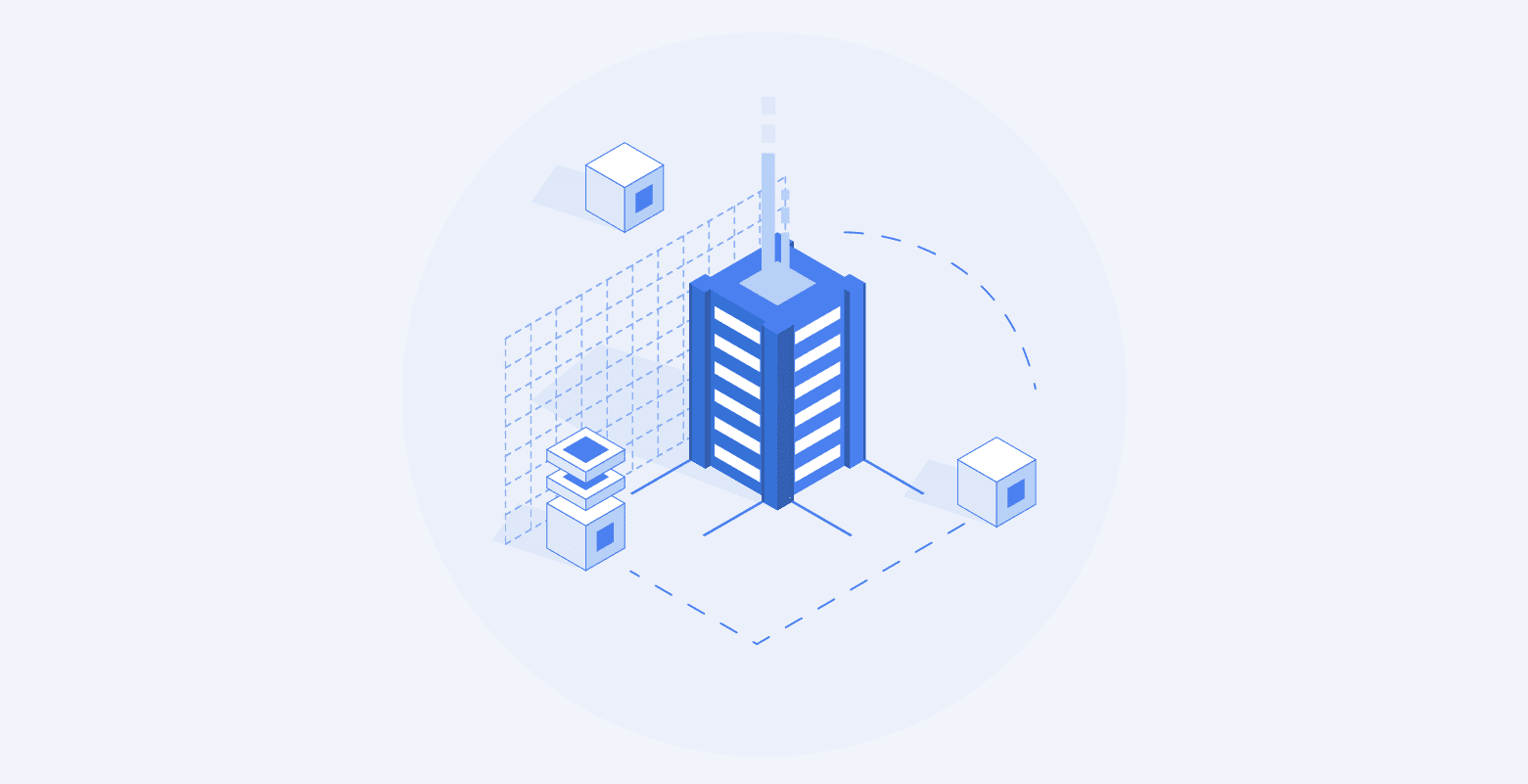
Understanding Online Restrictions: Causes, Implications, and Mechanisms
IntroductionIn the modern digital landscape, online restrictions are becoming an increasingly common and essential component of internet governance. This article delves into the intricate world of online restrictions, examining what they are, why they exist, and the various forms and implications they have on our digital lives. What Are Online Restrictions? Online restrictions constitute various mechanisms and techniques used to regulate access to digital content. From basic organizational controls to comprehensive national censorship policies, these restrictions form a complex framework that defines our access to the online world. Why Do Online Restrictions Exist? 1. Security Measures: - Data Protection: By restricting access to specific websites and content, organizations and governments can protect sensitive data from potential breaches. - Malware Defense: Online restrictions can block sites known to host malicious content, preventing malware infections. - Access Control: Limiting user access to essential services helps maintain integrity and confidentiality, reducing insider threats. 2. Legal and Regulatory Compliance: - Copyright Enforcement: By blocking access to sites hosting pirated content, jurisdictions can enforce intellectual property rights. - Content Regulations: Laws concerning hate speech, defamation, or obscenity may necessitate online restrictions to ensure compliance. - Industry Regulations: Specific industries may have unique legal requirements that necessitate particular forms of online restriction. 3. Censorship: - Political Control: Governments may suppress dissenting opinions or opposition by blocking access to particular websites or social media platforms. - Cultural Preservation: Some nations may limit access to foreign content to preserve cultural norms and values. - Information Manipulation: Controlling what information is accessible enables shaping public opinion or hiding unfavorable information. 4. Bandwidth Management and Quality Control: - Network Efficiency: ISPs might limit bandwidth-heavy services during high traffic periods to prevent network congestion. - Service Prioritization: Essential services like emergency response might be prioritized over entertainment content. - Cost Control: Organizations may restrict access to non-essential content to reduce bandwidth costs. Different Forms of Online Restrictions - Content Filters: - Keyword Filtering: Blocking content based on specific keywords or phrases. - URL Blocking: Preventing access to specific URLs or domains. - Category Filtering: Blocking entire categories, such as gambling or adult content. - Geo-Blocking: - Licensing Compliance: Enforcing regional licensing agreements for content like movies or music. - Legal Compliance: Ensuring content is only available in jurisdictions where it's legal. - Market Segmentation: Tailoring content and pricing to specific markets. - Firewalls and Intrusion Prevention Systems (IPS): - IP Blocking: Blocking traffic from specific IP addresses known to be malicious.(Want Quality IP Proxies? Come LIKE.TG) - Port Control: Restricting access to specific network ports to prevent unauthorized services. - Protocol Inspection: Analyzing network traffic to detect and prevent malicious activity. - Throttling and Traffic Shaping: - Bandwidth Allocation: Limiting bandwidth to certain types of content or services. - Peak Time Management: Slowing down non-essential traffic during peak usage hours. - Fair Usage Policies: Ensuring equitable distribution of bandwidth among users. ConclusionOnline restrictions are a complex and multifaceted aspect of modern internet use. They serve critical functions in maintaining security, legality, and quality of service but can also raise concerns about freedom, privacy, and access to information. Understanding the why and what of online restrictions helps users, policymakers, and professionals navigate the intricacies of the digital world. It fosters an informed dialogue and enables responsible and ethical use of the internet, striking a balance between control and accessibility. Whether viewed as safeguards or barriers, online restrictions remain an integral part of the internet's evolving landscape. Recognizing their purpose and impact ensures a more transparent, secure, and equitable online experience for all.

Optimizing Digital Performance: The Synergy of CDNs and Proxy Servers Explained
Introduction:In today's fast-paced digital world, the importance of delivering content swiftly and securely cannot be overstated. But how can businesses and organizations achieve this without sacrificing customization and user experience? The answer lies in the seamless integration of Content Delivery Networks (CDNs) and proxy servers. While CDNs excel in globally distributing web content to reduce latency and enhance user experience, proxy servers add an extra layer of personalization and security. This article aims to delve into the synergistic relationship between these two critical technologies, exploring how they can be combined to create a robust, flexible, and secure digital ecosystem. We'll look at how proxies can enhance CDN functionalities—adding personalization, security features, and more—while also offering strategies to help you make informed decisions when selecting a proxy to work with your CDN. The Fundamentals: Proxies and CDNs Revisited—An In-depth Perspective Understanding the distinct functionalities of Content Delivery Networks (CDNs) and proxy servers is pivotal before diving into how these technologies can complement each other. CDNs are robust systems composed of globally distributed servers and data centers that cache web content for easier accessibility. They reduce the geographical distance between the user and the data, thereby improving website load time, reducing latency, and generally enhancing the user experience. CDNs are typically used to store and deliver various types of web content—be it text, images, or streaming media. Proxy servers, on the other hand, serve as an intermediary between a user's device and the World Wide Web. They facilitate the exchange of information between your computer and internet servers. Proxies offer multiple advantages, including enhanced anonymity through IP masking, controlled access via content filtering, and additional caching capabilities. They are highly adaptable and can be used for various purposes, including bypassing geo-blocks, increasing online security, or managing network loads. Proxies for Tailored Content Delivery—The Advantage of Personalization Proxies offer something that CDNs generally do not: an unparalleled level of customization and personalization. While CDNs are engineered to deliver content rapidly and efficiently to a broad user base, proxies provide the ability to tailor this content delivery based on individual user needs or specific business policies. For example, proxies enable the setting up of content filters that can block specific types of web content, making them ideal for educational institutions or businesses that want to restrict access to particular sites. Furthermore, proxies offer more granular control over geolocation features. Unlike a CDN, which delivers the closest cached content to a user, a proxy can be configured to funnel content through specific locations, thereby effectively implementing geolocation restrictions or benefits. Also, the ability to conduct A/B tests is elevated when using proxies. By directing different types of content to various user segments through a proxy, businesses can gain more insightful data on user behavior, engagement, and preferences. Security and Anonymity Upgraded—Fortifying the Digital Fort Both CDNs and proxies offer layers of security, but when combined, they form an almost impenetrable shield. CDNs are well-known for their ability to mitigate the risks associated with DDoS attacks. They accomplish this by distributing traffic across multiple servers, making it more challenging for attackers to overwhelm a single point. Additionally, most CDNs come with SSL/TLS encryption capabilities to secure data transfers. Proxies add another layer to this security by masking the origin server's IP address. This makes it exceedingly difficult for attackers to pinpoint and exploit the main server, providing an added layer of anonymity and security. Furthermore, proxies can be configured to block access to known malicious sites or IPs, thereby acting as a first line of defense against various types of cyber threats. When you integrate a proxy with a CDN, you end up with a two-tiered security architecture that significantly lowers the overall risk of cyber-attacks, data breaches, and unauthorized data access. This holistic approach to security is increasingly being adopted by businesses that face a high level of online interaction and thus, higher risks. Localized Caching: The Best of Both Worlds—A Deeper Dive While Content Delivery Networks (CDNs) have a global reach, distributing content to various geographical locations, there are instances when more localized control over caching is necessary. This is where proxy servers come into play. Proxies can be configured to deliver content specifically targeted to a particular locality or user group, providing a much more granular level of control. For example, a local government website may need to deliver specific updates or information only to residents within a particular jurisdiction. Configuring a proxy server to cache this localized content ensures that only those residents will access that particular information. In a business setting, a multinational company can use proxies to offer promotions or discounts specifically to customers in a single country or region, while still utilizing a CDN for global content distribution. Additionally, proxy servers offer the ability to specify cache expiration times for particular types of content, thereby controlling how long certain information remains in the cache. This is incredibly useful for data that is time-sensitive or for organizations that need to comply with data retention policies. Bandwidth Efficiency and Cost Savings—An Analytical Perspective Bandwidth is a precious resource, and costs can escalate quickly for companies that handle large amounts of data. When used in conjunction with a CDN, proxy servers can offer significant bandwidth efficiency and cost-saving benefits. CDNs typically handle the heavy lifting, caching larger and more frequently accessed files like high-resolution images, videos, or large software downloads. Proxies can complement this by taking on a more specialized role. They can cache smaller, more specific files or even manage real-time data streams. For instance, a news website could use a CDN to cache common images and layout files, while a proxy caches live update snippets and breaking news alerts. By doing this, the overall burden on your origin servers is reduced, translating into tangible cost savings and increased operational efficiency. Selecting a Proxy for Your CDN—Key Considerations Choosing the right proxy(LIKE.TG Proxy Provider) to integrate with your CDN is a crucial decision that can influence your content delivery strategy. Here are some key factors to consider: - Type of Proxy: The kind of proxy you opt for depends on your specific needs. Residential proxies are excellent for localized content delivery and mimicking real-user behavior. Data center proxies offer speed and are typically used for web scraping and data extraction, whereas mobile proxies are ideal for mobile-focused services or applications. - Compatibility: Not all proxy services integrate seamlessly with all CDN providers. Make sure that the proxy service you're considering is fully compatible with your CDN provider, avoiding any functionality clashes or integration difficulties. - Scalability: As your organization grows, both your CDN and proxy should be able to scale effortlessly to accommodate increased traffic and data loads. Therefore, look for services that offer easy scalability options without requiring an entire overhaul of your existing system. - Security Features: Beyond the basic SSL/TLS encryption offered by CDNs, consider proxies that offer additional security layers like data encryption, malware scanning, and more advanced firewall settings. By taking these factors into account, you can make a more informed choice, ensuring that your CDN and proxy work in harmony to offer a fast, secure, and efficient content delivery system. Conclusion:The marriage of Content Delivery Networks and proxy servers presents a compelling solution for modern businesses and organizations looking to optimize their digital operations. While CDNs handle the broader, global aspects of content delivery, proxies can be tailored to address localized, specific needs, whether those are security, customization, or data management. Together, they form a holistic infrastructure capable of offering speed, flexibility, and multiple layers of security. By understanding the complementary capabilities of these technologies and by following key considerations when making your selection, you can set up an efficient and secure content delivery system tailored to your unique requirements. Whether you're a multinational corporation or a small local business, the combined power of CDNs and proxies can help you achieve peak operational efficiency and the highest level of security.
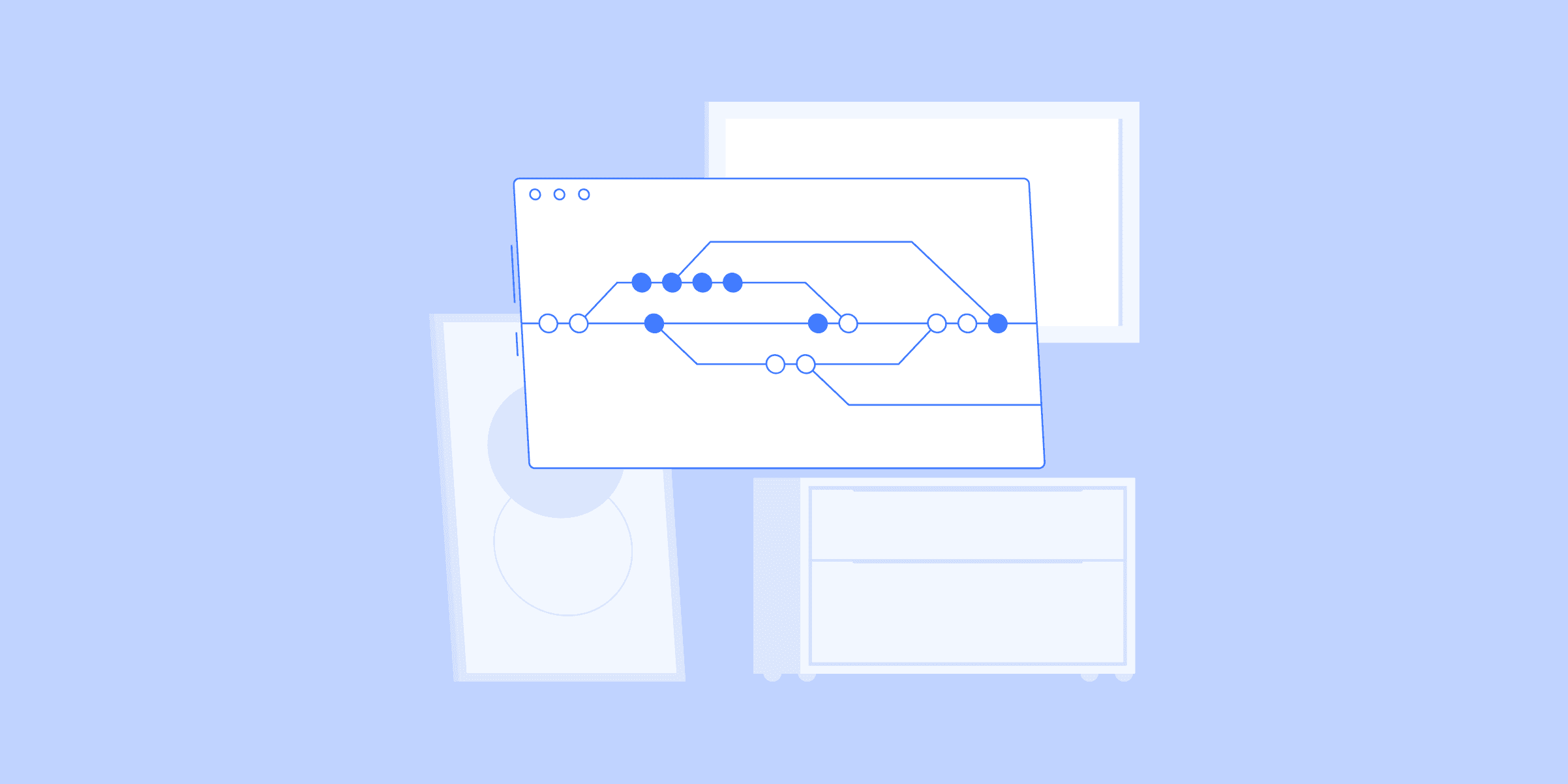
How to Use Proxies in Bypassing Online Restrictions: A Comprehensive Guide
IntroductionIn today's interconnected world, online restrictions can be a significant hindrance to free access to information, resources, or entertainment. These barriers may be implemented for various reasons, including but not limited to security measures, legal compliance, or even censorship. Proxies have emerged as popular tools to bypass such restrictions, enabling access to blocked content or services. This comprehensive guide delves into the world of proxies, focusing on how they work, types, applications, and ethical considerations. Section 1: Understanding Proxies What are Proxies?A proxy server acts as an intermediary gateway between a user and the internet. By forwarding requests and responses, proxies hide the user's real IP address, making it possible to bypass restrictions linked to location or specific IP ranges. Types of Proxies- HTTP Proxies: Primarily for web browsing, they work with HTTP and HTTPS websites.- SOCKS Proxies: More versatile, handling various network traffic, including email, FTP, and torrents.- Residential Proxies: Utilizing real residential IP addresses, they are harder to detect and block.- Data Center Proxies: Housed in data centers, these are common for bulk data scraping and automation tasks. Section 2: How to Use Proxies to Bypass Restrictions Choose the Right ProxyThe choice of a proxy depends on specific needs. For instance, residential proxies might be suitable for streaming geo-blocked content, while data center proxies may be preferred for web scraping. ConfigurationModern browsers and applications usually have proxy settings. Input the proxy IP address and port number manually or use a proxy service with an intuitive interface. AuthenticationSome proxies require authentication using a username and password to ensure secure access. Test the ConnectionTesting the connection confirms it's working correctly. Various online tools can verify your IP address and proxy status. Utilize Proxy ChainingFor increased anonymity, chain multiple proxies together, making tracking the original IP address even more challenging. Section 3: Applications of Proxies in Bypassing Restrictions Accessing Geo-Blocked ContentProxies enable bypassing geo-restrictions on streaming services, news sites, or online marketplaces. Protecting Online AnonymityThey provide privacy and anonymity, vital for journalists, activists, or researchers in restrictive environments. Web ScrapingProxies enable scraping large volumes of data without being blocked by anti-scraping measures. Section 4: Ethical ConsiderationsProxies offer many benefits, but their use may violate some platforms' terms of service and might even have legal implications in some jurisdictions. Always consult local laws and platform rules to ensure compliant use. Recommended Proxy Service: LIKE.TG In the rapidly growing market of proxy services, LIKE.TG has emerged as a standout provider, offering a vast network of over 90 million real, clean, and anonymous residential proxy IPs that cover more than 220 regions worldwide. Here's why we recommend considering LIKE.TG for your proxy needs: 1. Diverse Proxy Types: LIKE.TG supports both HTTP(S) and SOCKS5 protocols, offering rotating and static residential proxies. Whether you need dynamic IPs or fixed IPs for specific tasks, they have a solution. 2. Cost-Effective Plans: With Rotating Residential Proxies starting at $0.8/GB for 6 months and city, ASN-level targeting SOCKS5 Residential Proxy starting at $0.04/IP, LIKE.TG offers competitive pricing suitable for various budget ranges. 3. Comprehensive Targeting Options: LIKE.TG's extensive coverage allows country, city, and ASN-level targeting, providing flexibility for specific geographical requirements. 4. Unmetered Bandwidth & Unlimited Concurrent Sessions: Say goodbye to limitations on bandwidth and concurrent sessions. LIKE.TG offers unrestricted access, ensuring seamless and uninterrupted operations. 5. Integrated Proxy Software: The IP2 Proxy Manager integrates sufficient available proxy IPs into one powerful software, compatible with various applications. This simplifies the configuration process, especially for global SOCKS5 residential proxies. 6. Versatile Applications: LIKE.TG's proxies can be employed across various domains including Brand Protection, Ad Verification, SEO, Price Integration, Academic Surveys, Social Media Management, Fingerprint Browsers, Online Games, Sneakers, E-Commerce, Data Collection, and more. 7. Professional Support: LIKE.TG provides user support and detailed documentation, ensuring that even those new to proxies can navigate their services with ease. For those seeking a reliable, versatile, and cost-effective solution for their proxy needs, LIKE.TG stands as a strong candidate. With its expansive offerings and focus on quality and usability, it caters to a wide array of professional requirements. Whether you're a business looking to protect your brand, a researcher in need of accurate data, or an individual seeking to bypass geographical restrictions, LIKE.TG’s comprehensive suite of features and competitive pricing makes it a preferred choice. ConclusionProxies have become essential tools in the current digital landscape, providing means to bypass online restrictions and access information freely. From understanding different proxy types to their various applications, this guide equips readers with comprehensive insights into proxies. Whether for accessing geo-blocked content, maintaining online anonymity, or conducting data-intensive tasks like web scraping, proxies offer versatile and powerful solutions. However, navigating the ethical and legal frameworks surrounding their use is vital. By leveraging this understanding, individuals, businesses, and organizations can navigate the complex terrain of online restrictions, contributing to a more open and accessible digital world. Their applications extend across various domains, making them indispensable in today's internet-driven society. Always remember to use proxies responsibly and in accordance with all applicable laws and regulations.
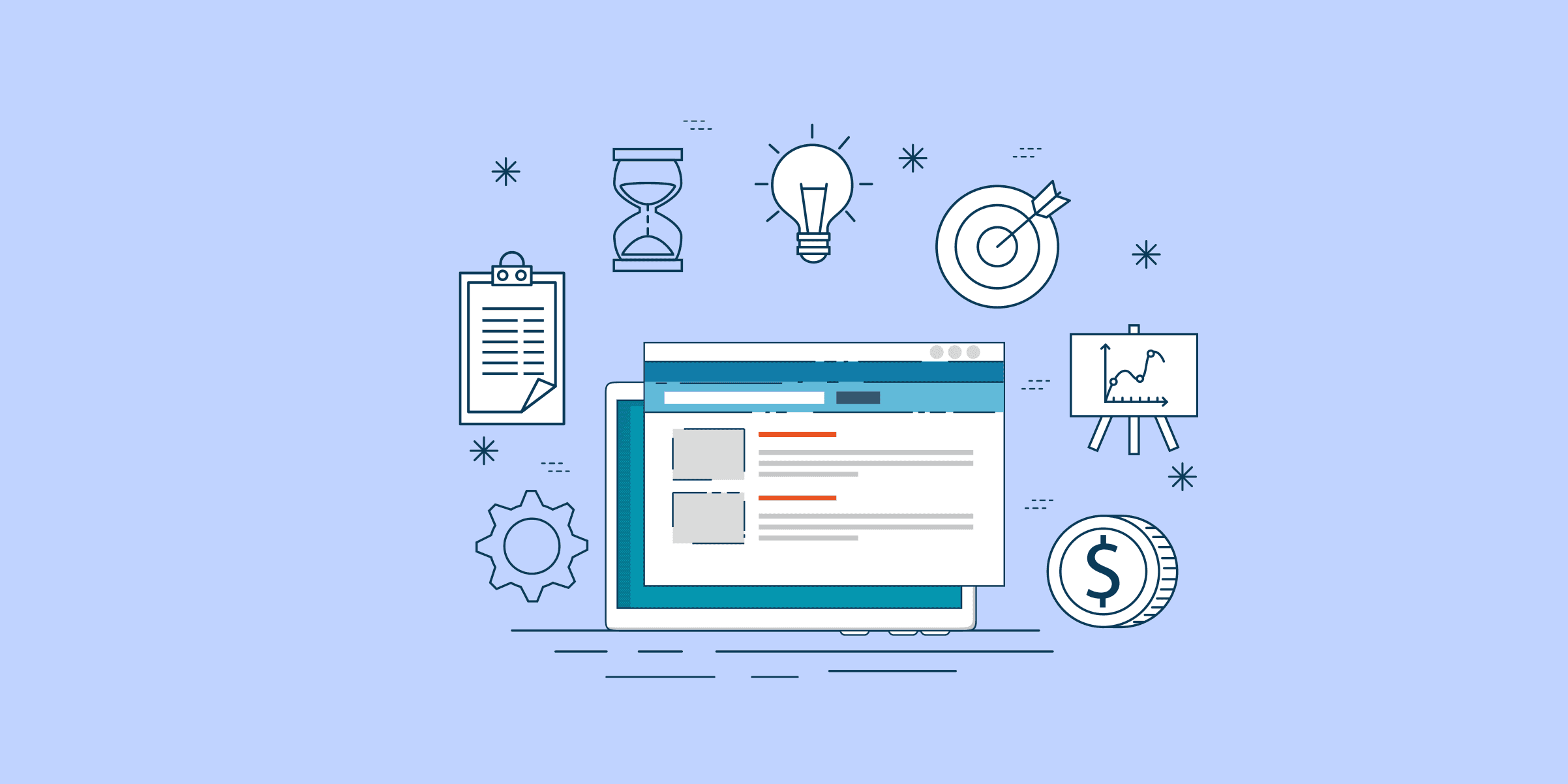
Unlocking the Power of Residential Rotating Proxies: A Complete Guide for Secure and Efficient Online Operations
IntroductionThe digital landscape is evolving rapidly, ushering in a new era of complexity in terms of online privacy, data gathering, and internet security. Within this dynamic environment, the concept of Residential Rotating Proxies has become a cornerstone for those who require a secure and efficient way to navigate the World Wide Web. However, despite their rising popularity, questions abound. How do they work? Are they worth the investment? And, most importantly, are they safe to use? This comprehensive guide aims to answer these queries and more, exploring the merits of residential rotating proxies, the unique advantages they offer, and how services like LIKE.TG can simplify their use for individuals and enterprises alike. What Are Residential Rotating Proxies? Residential rotating proxies are a type of proxy server that uses genuine IP addresses provided by Internet Service Providers (ISPs) and assigned to homeowners. These IP addresses are tied to a physical location, giving the appearance of genuine web traffic. This distinguishes them from other types of proxies that often use data center-based IP addresses, which can be easily flagged or banned by websites' security systems. The residential status of these proxies lends an added layer of authenticity, making them particularly valuable for a range of online operations from web scraping to secure browsing. Advantages of Residential Rotating Proxies Trustworthiness Websites and online services are becoming increasingly skilled at detecting and blocking traffic that uses proxy servers, particularly those employing data center IPs. Residential rotating proxies have the upper hand here; they are registered and verified by ISPs, making it extremely challenging for websites to distinguish them from conventional users. The IPs are tied to real residential addresses, thereby passing through most verification checks that websites may employ. This level of trust allows for more stable connections and reduces the risk of encountering CAPTCHAs or being banned. Evasion Capabilities The reliability of residential rotating proxies isn't just about gaining trust; it's about maintaining it throughout your online projects. These proxies are capable of rotating through multiple IP addresses, evading detection systems designed to identify and block non-standard browsing behavior. This is particularly useful for scraping data from websites that have stringent security protocols, as it makes the data collection process smoother and less prone to interruptions. Cost vs. Benefit: Is It Worth Investing in Residential Rotating Proxies? The cost associated with residential rotating proxies can be higher compared to data center proxies. However, their value becomes increasingly clear when used for demanding tasks such as web scraping, data harvesting, or automating web interactions. The risk of your operation being disrupted due to IP blocking is significantly lower, which often means fewer delays and less manual intervention. When you consider the overall efficiency gains and reduced risks, the investment often justifies itself. Risks Associated with Free Services While the allure of free proxy services is understandable, the risks far outweigh the benefits. Free services often come with poor security measures, unreliable performance, and the real possibility of data exploitation. There have been numerous cases where such services log sensitive user data and sell it to third parties, including but not limited to login credentials, credit card information, and personal identification details. Using Residential Rotating Proxies: The How-To LIKE.TG offers a streamlined approach for employing residential rotating proxies. They provide automated packages with proxy ports and API endpoints, making integration with your existing software solutions simple. The process usually involves inputting the provided port and API details into your application, enabling it to automatically pull new IPs from the rotating pool, making the entire operation hassle-free. Legal and Ethical Considerations Legality The use of proxies is largely a legal grey area; in most Western countries, there's no explicit law forbidding the use of proxy servers. However, this isn't a universal rule. Countries with stringent internet censorship laws may deem the use of proxies illegal, especially if used to circumvent national restrictions. Safety Guidelines A crucial aspect of using proxies is ensuring they come from a reliable source. This can't be emphasized enough. Trusted providers like LIKE.TG offer secure, reliable, and compliant solutions that ensure your data remains your own and your activities are shielded from prying eyes. By expanding your understanding of residential rotating proxies and associated considerations, you arm yourself with the knowledge to navigate online spaces securely and efficiently. ConclusionIn an online world teeming with data, security risks, and ever-adaptive algorithms, the use of residential rotating proxies is not just beneficial—it's practically essential for anyone looking to undertake serious web operations. With unmatched trustworthiness and evasion capabilities, these proxies stand as a bulwark against the common issues of IP blocking and data theft. Though they may come with a price tag, the long-term benefits overwhelmingly justify the investment. By choosing trusted service providers like LIKE.TG, you're not merely purchasing an IP solution; you're investing in reliability, data integrity, and above all, peace of mind. This guide aimed to equip you with the information you need to make an informed choice, ensuring you can traverse the digital landscape both securely and efficiently.

Navigating the Web Safely: A Comprehensive Guide to Proxy Services and Authentication Methods
IntroductionIn today's digital age, security and convenience are often seen as two sides of the same coin. With the ubiquitousness of internet usage for everything from academic research to corporate work and personal leisure, the need for secure and efficient ways to access online resources has never been more critical. Proxy services (LIKE.TG Proxy Service Provider), including explicit and transparent types, along with various authentication methods, serve as the foundation for achieving this balance. This guide aims to demystify these essential components of online security, revealing how they function and where they are most effectively applied. Whether you're a business leader wanting to tighten your company's internet security or an individual seeking to browse safely, this article offers invaluable insights into choosing the right approach for your needs. Understanding Explicit Proxies: The Bouncer at the Internet Door What is an Explicit Proxy?Explicit proxies are essentially intermediaries that stand between your computer and the internet. These proxies actively filter and manage web traffic, acting like the digital equivalent of a bouncer at a nightclub. They require specific configurations and usually prompt you for credentials or other forms of authentication. How Do They Function?When you initiate a web request—say you want to access a specialized database or a scholarly journal—the explicit proxy intercepts this request. It then prompts you for authentication details, often a username and password. Upon successful verification, the explicit proxy forwards your request to the web server. Essentially, it acts as a gatekeeper, ensuring that only authorized users can access specific content. Real-World ImplicationsIn corporate environments, explicit proxies are commonly deployed to enforce network security protocols and internet usage policies. For example, if you try to read a trade journal or access social media during your work hours, the explicit proxy will likely ask for your employee credentials to determine whether you have the authorization to view such content. These proxies are crucial for controlling bandwidth usage, blocking access to inappropriate content, and protecting against malicious attacks. Advanced FeaturesSome explicit proxies offer advanced filtering capabilities, like data loss prevention (DLP) and threat detection, further enhancing the security framework of organizations. These features can be customized to meet the specific needs of an enterprise, such as compliance requirements or intellectual property protection. Unpacking Transparent Proxies: The Invisible Guardian What is a Transparent Proxy?A transparent proxy operates quietly in the background, offering a seamless browsing experience. Unlike explicit proxies, they don't require users to manually change any settings on their devices. The term "transparent" alludes to their invisible nature; they automatically handle web requests without direct user interaction. How Do They Function?When you type in a search query or click on a link, the transparent proxy comes into play without you even noticing. It screens your web request and determines if it adheres to set policies or security guidelines. If the request is deemed safe and compliant, the proxy allows it to pass through, forwarding it to the intended web server. Real-World ApplicationsTransparent proxies are often deployed in public Wi-Fi networks, like those in cafes, airports, or libraries. These proxies offer an additional layer of security by scanning web traffic for any threats or malicious content. For example, if you're looking up book reviews while enjoying a latte, a transparent proxy operating on the café's Wi-Fi network vets your web request in the background, ensuring a safer browsing experience. Additional ConsiderationsThough transparent proxies offer the advantage of seamless operation, they may sometimes inadvertently block useful or safe content. This is why they are generally complemented by more advanced filtering systems or used in tandem with explicit proxies in more complex network architectures. Both explicit and transparent proxies serve vital roles in today's digital landscape. While explicit proxies offer a more controlled, secure environment, transparent proxies provide ease and seamlessness. Understanding their functionalities and real-world applications can help individuals and organizations make informed decisions about implementing the right type of proxy service. Windows Login: Integrated Windows Authentication (IWA) What Is It?Integrated Windows Authentication (IWA) serves as a cornerstone for organizations that rely heavily on Microsoft's ecosystem. The technology was designed to streamline the user authentication process by automatically using the login credentials entered during the Windows startup phase. This alleviates the need for additional logins when you are accessing secure, internal resources. How Does It Work?When you boot up your Windows PC, you are initially required to input your login credentials. These credentials are securely stored and reused for subsequent authentications. For instance, let's say you need to access an internal company portal or a SharePoint site; IWA identifies and authenticates you based on the initial Windows login. This eliminates the inconvenience of repeated manual logins for each internal resource. Practical ImplicationsImagine an organization where employees have to access multiple internal databases, SharePoint sites, and intranets daily. IWA significantly cuts down on the time spent in logging into each of these services, thereby improving efficiency and user experience. One-Click Sign-In: Windows Single Sign-On (SSO) What Is It?Windows Single Sign-On (SSO) further amplifies the ease of access across various platforms and services. It allows users to employ a single set of credentials—usually the same as their Windows login—to access multiple applications or services. How It FunctionsOnce you perform the initial login, usually at the start of your workday, Windows SSO takes charge. You can effortlessly switch between various platforms like your email client, corporate intranet, and even specialized enterprise software without the need for multiple logins. Practical ScenariosIn a healthcare setting, for instance, doctors and nurses can switch between patient records, internal communication channels, and medical databases without wasting time on multiple login screens. This makes SSO not just a convenience feature but a critical component for operational efficiency in time-sensitive environments. Username & Password: LDAP (Lightweight Directory Access Protocol) What Is It?LDAP stands for Lightweight Directory Access Protocol, a proven method for user authentication that requires manual input of a username and a password. How It FunctionsUpon trying to access a secure resource, a login prompt appears on your screen. After entering your credentials, the LDAP server verifies them against its directory before granting access. Real-World ApplicationsLDAP is often used in educational institutions for accessing digital libraries, grading systems, and other secure online resources. It provides a secure yet flexible means of authentication that can be implemented across various platforms and services. One-Time Passwords: Radius Authentication What Is It?Radius Authentication elevates the security game by providing a one-time password (OTP) for each login attempt, making it exceptionally secure. How Does It Function?When you try to log in to a secure resource, the Radius server generates and sends a temporary one-time password to your registered mobile number or email address. You must then enter this OTP to gain access to the resource. A Real-World ApplicationConsider the scenario of online banking. If you attempt to log in to your bank account from a new or suspicious location, Radius Authentication is likely to kick in. It will send a one-time password to your registered mobile number, adding an additional layer of security that guards against unauthorized access. Each of these authentication methods has its unique set of advantages and drawbacks. However, understanding the mechanics behind each can help organizations and individuals choose the most suitable authentication strategy, balancing between convenience and security. Specialized Authentication in Proxy Services: Enhancing Security Through CustomizationIn a rapidly evolving digital landscape, specialized authentication methods play a pivotal role, particularly in the field of proxy services. While we have talked about various general forms of authentication like Integrated Windows Authentication (IWA) and Lightweight Directory Access Protocol (LDAP), specialized proxy services often employ unique approaches like IP Address Authentication and Username & Password Authentication. Let's delve deeper into these specialized authentication mechanisms. IP Address Authentication: The Whitelist Approach (LIKE.TG API Mode)Relation to Previous MethodsIP Address Authentication offers a level of convenience that is somewhat akin to IWA and Single Sign-On (SSO). This method minimizes user intervention by automating the authentication process based on a predefined list of IP addresses. Once your IP address is on this whitelist, you enjoy a seamless, hassle-free browsing experience. How It WorksIP Whitelisting: In this method, the administrator submits an IP address to the proxy service for whitelisting. This process often involves logging into the service dashboard and manually adding the IP addresses that need to be authorized. Automatic Authentication: Once your IP address is whitelisted, any subsequent request from that address is automatically authenticated, negating the need for manual login procedures. Practical ExampleConsider the scenario where you run a data scraping operation for market research. Your server’s IP address would be whitelisted by the proxy service, thereby allowing you to gather data without constant authentication roadblocks. This efficiency is invaluable in operations where time and seamless data flow are crucial. Username & Password Authentication: The Manual Checkpoint (LIKE.TG User+Pass Auth)Relation to Previous MethodsUsername & Password Authentication is a more traditional approach, sharing similarities with LDAP. This method requires manual entry of credentials and, as a result, offers an extra layer of security at the cost of convenience. How It WorksLogin Prompt: When you attempt to access a resource through the proxy service, a prompt appears on your screen asking for your username and password. Credential Verification: After you've entered your credentials, the service runs a verification process. Only upon successful verification is access to the requested resource granted. Practical ExampleSuppose you are keen on maintaining a high level of online anonymity for research or personal reasons. You opt for a proxy service that requires Username & Password Authentication. Each time you activate the proxy, you will be prompted to enter your credentials. It's akin to logging into your email or social media accounts, adding a layer of security that is particularly valuable if you're accessing sensitive or restricted information. By employing specialized authentication methods like IP Address Authentication and Username & Password Authentication, proxy services offer a tailored security solution that can be adapted to specific user needs and operational requirements. Understanding these specialized options provides you with the tools to make informed decisions in optimizing your online security strategy. ConclusionNavigating the complexities of the online world requires a nuanced understanding of various security measures and the options available. We have delved into the mechanisms behind explicit and transparent proxies, explored diverse authentication methods like IWA, LDAP, and Radius Authentication, and even touched upon specialized approaches in proxy services. The key takeaway is that there's no one-size-fits-all solution; instead, your choice should reflect your specific requirements and context. Both explicit and transparent proxies offer unique advantages and trade-offs; the same applies to authentication methods. From the no-nonsense security of Radius Authentication to the seamless experience of Integrated Windows Authentication, there are options to suit every need and operational challenge. Armed with this knowledge, you are better equipped to make informed decisions that can optimize your online security strategy, ensuring a safer, more efficient digital experience. As we continue to evolve in a digital-first world, understanding these layers of online security will not just be a benefit; it will be a necessity.

Caching Proxy Servers: Boosting Web Performance and Efficiency
IntroductionIn today's digital landscape, speed, efficiency, and resource optimization are not just buzzwords; they are crucial requirements for any web service or application. With users demanding near-instantaneous responses, there's no room for lag or latency. One solution that has increasingly become a go-to strategy for improving web performance is the use of caching proxy servers. This comprehensive guide aims to unpack what caching proxy servers are, their advantages, disadvantages, and the types of strategies commonly employed in their use. We will also delve into practical considerations for setting up both external and internal caching proxy servers, as well as discuss some of the open challenges that come with implementing caching solutions. What is Caching Proxy? A caching proxy server functions as a gateway between client computers—like desktops, laptops, or mobile devices—and the web servers hosting the resources they seek. These resources could range from HTML pages to multimedia files like videos, images, or even application data. In essence, the caching proxy server acts like a massive short-term memory storage area, where "popular" or frequently requested data is temporarily stored. When a user sends a request, the caching proxy server first checks whether the requested data is available in its cache. If it is, and the data hasn't expired based on predetermined rules, the server retrieves the data from its cache and sends it to the client, eliminating the need to fetch it from the original web server. This operation significantly reduces the time taken to serve a user's request and allows the server to handle more clients concurrently. Advantages 1. Reduced Network Load By serving data from its cache, a caching proxy server can significantly reduce the number of requests sent to the original server. This becomes especially important during peak usage times when servers can get overwhelmed by a high volume of requests, leading to slower load times and potential outages. Through caching, bandwidth consumption is reduced, which can be a boon for organizations looking to lower their data transmission costs. Case Study: E-commerce during Holiday SeasonsDuring holiday seasons, e-commerce websites often face unprecedented amounts of web traffic. Employing a caching proxy can prevent server overloads and ensure a seamless user experience by distributing the traffic load. 2. Improved SpeedCaching brings data closer to the end-user by storing it at a nearby location, either on a local server or even on the user's device. This minimizes the round-trip time taken for data to travel from the original server to the user, effectively lowering latency and accelerating load times for web pages or applications. Example: Content Delivery Networks (CDNs)CDNs often employ multiple caching proxy servers strategically located worldwide. When a user requests content, the nearest server serves the cached data, ensuring rapid delivery. Disadvantages 1. Storage Requirements The efficacy of a caching proxy server is directly proportional to the storage capacity it has for cache data. As the variety and size of the content grow, so does the storage requirement. While storage solutions have become increasingly affordable, managing them efficiently can still be a complex and costly endeavor. Scenario: Streaming ServicesIn the case of streaming platforms that host large files like movies and series, the storage capacity needs can be immense, requiring a well-planned caching strategy to manage storage efficiently. 2. Data Freshness The other side of the caching coin is data freshness. While the server aims to serve the fastest data, it also has to ensure that the data is current and up-to-date. Serving stale or outdated information can lead to negative user experiences, incorrect decision-making, or even operational issues. It becomes imperative for caching proxy servers to regularly validate their cache data against the original source. Real-world Concern: News WebsitesFor platforms that disseminate breaking news or real-time updates like stock prices, even a slight delay in updating the cache can lead to the distribution of outdated information, thereby affecting the credibility and functionality of the platform. Types of Caching Strategies Least Recently Used (LRU) The Least Recently Used (LRU) strategy is one of the most straightforward cache eviction methods. In this approach, the cache keeps track of what was used when, actively discarding the least recently accessed items first when the cache limit is reached. Advantages:- Simple to Implement: LRU is algorithmically less complex, making it easier to implement.- Good for Temporal Locality: If your application frequently re-uses the same data shortly after accessing it, LRU can be effective. Disadvantages:- Not Always Efficient: LRU doesn’t account for the importance or size of the cached object, which may lead to critical data being evicted. Real-World Example: Browser CacheWeb browsers often utilize LRU for their caching strategy. If you visit a particular site often, the assets (images, scripts, etc.) are more likely to stay in the cache for quick loading. Time-To-Live (TTL) Time-To-Live (TTL) assigns each cached object a specific expiration time. When a cached object reaches its predetermined lifespan, it's either automatically removed from the cache or validated to check if an update is required from the original server. Advantages:- Data Freshness: Ensures that old or stale data doesn't stay in the cache for too long.- Predictable Cache Behavior: The TTL value offers a predictable pattern of cache eviction, making it easier to manage. Disadvantages:- Regular Maintenance: Requires close monitoring to optimally set the TTL value, or you risk caching items too long or too short. Example: DNS CachingIn DNS lookup services, a TTL value is set to specify how long the IP address should be stored in the cache. Cache Purging Cache purging involves manually or automatically removing selective data from the cache. This is particularly useful in cases where specific data is known to become stale or irrelevant over a short period. Advantages:- Highly Selective: Only targets specific data, preserving the rest.- Improves Data Accuracy: Useful for removing outdated information quickly. Disadvantages:- Manual Overhead: If not automated, cache purging can require considerable manual effort. Use Case: Content Management Systems (CMS)In a CMS, when an article is updated or corrected, a cache purge might be initiated to remove the outdated version. Caching Mechanisms Cache Requests Workflow Understanding the workflow of a typical caching proxy server can offer insights into its efficiency and limitations. Below is a detailed step-by-step overview: 1. Receive User RequestThe proxy server starts by accepting a client's request for a specific web object, such as an image, video, or HTML page. 2. Cache LookupThe server swiftly scans its cache database to determine if the requested object is already stored. This is a crucial step as it dictates the speed at which the request can be fulfilled. 3. Freshness CheckIf the object is found in the cache, the server must validate its freshness. This usually involves checking metadata to see if the object is still within its TTL or if the original server has a more updated version. 4. Serving the UserAfter validation, one of two things happen:- Cache Hit: If the object is fresh, the server serves it directly to the client, bypassing the need to contact the original server.- Cache Miss: If the object is stale or not found in the cache, the server fetches a fresh copy from the original server, stores it in the cache, and then serves it to the client. Example: Online Shopping SiteWhen a user browses products, the caching server might have already stored images and descriptions of popular items. A freshness check ensures that any seasonal discounts or out-of-stock labels are updated before the user sees them. By leveraging appropriate caching strategies and mechanisms, organizations can optimize both performance and resource allocation. Understanding the nuances of different methods enables informed decision-making in implementing caching solutions. Using an External Caching Proxy Server When you decide to employ an external caching proxy server, you're essentially offloading some of the work from your main server to another server designed specifically for caching purposes. This is beneficial for larger organizations or for services that require high availability and speed. Here's a more in-depth look into setting it up: 1. Configure the Caching Proxy Server Settings: This is the foundational step where you set the basic configurations like port numbers, authentication mechanisms, and logging settings. Depending on the specific software you're using for your proxy, this step can differ in complexity. 2. Select 'Web Cache Server' in HTTP Proxy Action: This usually involves navigating to the specific HTTP Proxy settings on your management dashboard and selecting the appropriate caching options. This informs the HTTP-proxy how to manage content caching for web resources. 3. Enable External Caching: After selecting 'Web Cache Server,' you'll often find an option for enabling external caching. Check this box to ensure that the HTTP proxy will use the external server for caching rather than any internal resources. 4. Specify the IP Address and Port: Lastly, you'll need to provide the IP address and the port number where your external caching proxy server is running. This ensures that the HTTP-proxy knows precisely where to send web traffic for caching. Using an Internal Caching Proxy Server The setup for an internal caching proxy server is quite similar to that of an external one. However, internal caching is usually employed for smaller setups or in scenarios where you have more control over the network. 1. Use Similar Settings as External Server: Essentially, you will follow similar steps as for setting up an external caching proxy, with tweaks tailored to your internal network configuration. 2. Allow All Desired Traffic: Make sure to specify which traffic should be routed through the internal caching proxy. This can often be defined based on IP addresses, user groups, or other categories depending on your organization's needs. 3. Implement HTTP Packet Filter Policy: Finally, you will need to add a packet filter policy to your setup. This should allow traffic to flow seamlessly from the internal caching proxy server to the wider Internet. This is essential for fetching new content and updating the cache. Open Challenges While implementing a caching proxy server—be it internal or external—can offer numerous benefits, it's not without its challenges. 1. Effectiveness of Hierarchical Caching Structures: As organizations grow, the complexity of their caching needs grows as well. Hierarchical caching involves multiple layers of caching servers, but the effectiveness of this structure can be hard to quantify and manage. 2. Strategies for Cache Coherency and Consistency: Managing cache effectively means ensuring that the data is both coherent and consistent. Cache coherency refers to all users seeing the same data, which is particularly challenging in distributed systems. Cache consistency, on the other hand, relates to ensuring that the cache is updated promptly when the source data changes, to avoid serving stale or outdated content. By understanding these steps and challenges, you can implement a caching proxy strategy that significantly improves your web performance while considering future scalability. ConclusionCaching proxy servers serve as an indispensable tool in the modern web infrastructure. They bring tangible improvements in network load, speed, and resource utilization, significantly enhancing the user experience. However, they are not a one-size-fits-all solution. The efficacy of a caching proxy server lies in its proper configuration, the adequacy of its storage capacity, and the appropriateness of the caching strategies employed. As organizations continue to expand, the challenges of implementing a robust caching architecture will require innovative solutions to ensure cache coherency and consistency. Understanding these nuances will not only help you implement an effective caching proxy but also allow for scalable solutions that can adapt as your organization grows. So, whether you're a network administrator, a web developer, or someone who simply wants to understand how to make web services faster and more efficient, knowing how caching proxies work is an invaluable asset.

Residential Proxies vs Datacenter Proxies vs Static Residential ISP Proxies: An In-Depth Analysis and Comparison
IntroductionNavigating the intricate landscape of proxies can often feel like a labyrinth. Whether you're an individual seeking to protect your privacy or a business aiming to scrape data or manage multiple online profiles, the type of proxy you choose can either be your strongest ally or your weakest link. This exhaustive guide aims to simplify this complex subject by dissecting three major classes of proxies: Residential Proxies, Datacenter Proxies, and Static Residential ISP Proxies. Through a detailed comparison, we'll help you unravel their unique features, benefits, and ideal scenarios for use, thereby empowering you to make a well-informed decision tailored to your needs.Table of ComparisonFeaturesResidential ProxiesDatacenter ProxiesStatic Residential ISP ProxieOriginISPsData CentersISPsIP TypeDynamicStaticStaticStabilityModerate (varies over time)High (stable)Very High (very stable)ReliabilityModerateHighExtremely HighSpeedVaries (Medium to Fast)FastFast to Very FastCostExpensiveCheaperModerate to ExpensiveSecurityHighModerateExtremely HighGeo-Targeting AbilityExcellentPoorSuperiorAnonymity LevelHighLowVery HighEase of SetupModerate to DifficultEasyModerateBandwidth LimitationsLimitedUnlimitedUsually LimitedUse-CasesWeb Scraping, Social MediaSEO, Brand ProtectionWeb Scraping, Ad Verification, Geo-Specific TasksResidential Proxies What Are Residential Proxies? Residential Proxies are IP addresses issued by Internet Service Providers (ISPs) to homeowners. These IPs are generally dynamic, which means that they are subject to change over time, either at fixed intervals or at random moments. Detailed Features and Benefits - Anonymity: The IPs are routed through real residential locations, making it very difficult to detect that the user is behind a proxy. This high level of anonymity allows for operations that require stealth and minimal risk of detection. - Geo-Targeting: Residential proxies are spread out geographically, offering you the opportunity to scrape or interact with web services that are geo-specific. They're often used to collect localized data or access geo-restricted content. - Dynamic Nature: With IPs that change automatically, users get a layer of security and anonymity that static IPs cannot offer. It becomes difficult to trace any activity back to a single point, adding an extra layer of protection. Ideal Use-Cases in Depth - Web Scraping: Because of their high anonymity, residential proxies are a go-to choice for web scraping tasks. They are less likely to be blocked by anti-bot measures, enabling large scale scraping projects. - Social Media Management: Managing multiple social media accounts from a single IP address can trigger flags for suspicious activity. Using residential proxies can help you run several accounts without raising any red flags. Datacenter Proxies What Are Datacenter Proxies? Datacenter Proxies are IP addresses that belong to the realm of data center servers, and they have no direct affiliation with ISPs. These types of proxies are static IPs, meaning they do not change over time. Detailed Features and Benefits - Speed: One of the most noticeable advantages is their high speed. Datacenter Proxies can offer blazing fast connection speeds, which is ideal for tasks that need quick data retrieval. - Cost-Effectiveness: Generally, these proxies are the most affordable, offering a cost-efficient way to carry out operations that do not necessarily require high levels of anonymity. Ideal Use-Cases in Depth - SEO Monitoring: The quick speed and lower costs of datacenter proxies make them ideal for monitoring website rankings on different search engines across various locations. - Brand Protection: These proxies are highly efficient for tracking unauthorized use of copyrighted content or brand names across multiple platforms, thanks to their speed and affordability. Static Residential ISP Proxies What Are Static Residential ISP Proxies? Static Residential ISP Proxies are unique in that they are issued by ISPs but are static, unlike typical residential proxies. This means that the IP address remains constant over time. Detailed Features and Benefits - Stability: They offer the most stable and reliable connections, which is crucial for tasks that require long-duration activities without interruptions. - Security: Given their legitimate origin and constant IP, these types of proxies are less prone to being blacklisted, providing a secure environment for web activities. Ideal Use-Cases in Depth - Web Scraping: These proxies are best suited for long-term web scraping projects, where a stable and secure connection is needed for extracting large amounts of data. - Ad Verification: Static Residential ISP Proxies allow you to consistently verify the appearance and placement of ads, especially in geo-specific settings, due to their high reliability and stability. ConclusionThe labyrinth of proxy options doesn't have to be daunting if you know precisely what you're looking for. At the end of the day, your specific needs and how you plan to use a proxy should guide your decision-making process. Do you need the cloak-and-dagger anonymity of Residential Proxies? Or does the speedy efficiency of Datacenter Proxies better serve your purpose? Perhaps you're looking for a golden middle ground of stability and legitimacy found in Static Residential ISP Proxies. LIKE.TG provides and covers Residential Proxies and Static Residential ISP Proxies. No matter what your unique needs may be, having a thorough understanding of these three major types of proxies is the first step towards making an optimal choice. Armed with this knowledge, you can now align your objectives with the proxy type that offers the most advantages for your use-case.
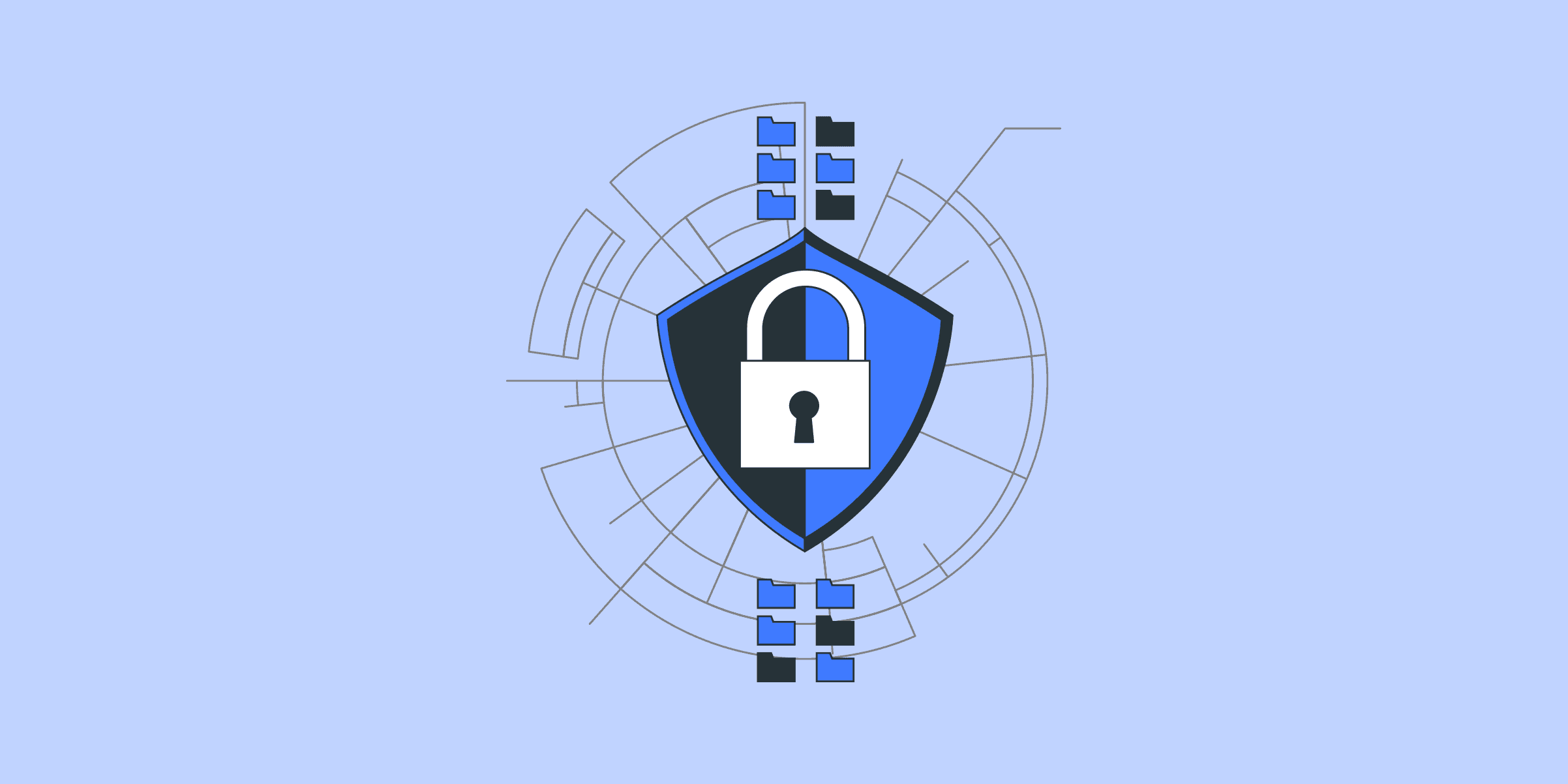
Bandwidth & Performance Considerations in Proxy Environments: A Comprehensive Guide
Introduction The digital world is now more interconnected than ever, making the optimization of bandwidth and performance a crucial factor for anyone relying on internet access. This becomes even more important in settings that employ proxy servers, which serve as the bridge between users and the broader internet. In this comprehensive guide, we will explore the intricacies of bandwidth and performance in proxy environments, and how they impact both businesses and individual users. Caching: The Cornerstone of Bandwidth Efficiency What is Caching and How Does It Work? Caching is the practice of storing copies of frequently requested data temporarily to quicken data retrieval times for future requests. The cache storage can be hosted on various types of disks, and its management is often orchestrated by algorithms to ensure optimal use of finite storage space. The Multiplicative Effect of Caching Caching is not just about quick data retrieval; it also plays an instrumental role in bandwidth conservation. By reducing the need to fetch the same data repeatedly from the origin server, bandwidth usage can be minimized. This can lead to substantial savings in bandwidth over time, particularly for organizations dealing with high volumes of web traffic. How Caching Improves Performance and Reduces Costs Fetching data from a cache is usually faster than from an origin server, which enhances the user experience through reduced latency and faster load times. Furthermore, serving data from a cache offloads some traffic from the origin server, enhancing its performance. This efficiency in bandwidth use can also translate into cost savings, making caching an invaluable asset in a proxy environment. Bandwidth Control Mechanisms Web Traffic Management Some proxy servers offer features that allow you to allocate bandwidth based on the type of web traffic. These functionalities are generally more specialized and might focus more on the data being sent to users rather than the data being fetched. Network Traffic Management A more generalized approach to bandwidth control is through managing traffic based on ports, protocols, or application signatures. This is especially useful when trying to allocate bandwidth to different types of network traffic, such as VPNs or VoIP services. Understanding Bandwidth Plans and Limitations Available Bandwidth and Limit Setting Service providers often offer various plans with differing bandwidth limitations. Exceeding these limits usually results in additional charges. Some services also allow you to set a cap on your bandwidth consumption, which can prevent unexpected costs. Prepaid Bandwidth Options Several services offer prepaid options for bandwidth, providing users with greater control over their expenses and usage patterns. Bandwidth Throttling and Simulation Tools Tools are available that allow users to simulate different bandwidth and latency conditions. These are particularly useful in understanding how your network would perform under different scenarios and can be an essential part of optimizing your network resources. Do Proxies Consume the Same Bandwidth as the Origin Server? While proxies can offer various features for bandwidth optimization, it's crucial to understand that they generally don't save bandwidth by default. In fact, the use of a proxy could potentially double your bandwidth consumption because it needs to fetch data from the original server before forwarding it to you. Conclusion Mastering the complexities of bandwidth and performance in a proxy setting can lead to improved operational efficiency, a better user experience, and potentially significant cost savings. Whether you are an individual user or a business, understanding caching solutions, bandwidth control mechanisms, and the ins and outs of different bandwidth plans can make a significant difference in your online activities. This guide aims to equip you with the knowledge needed to make informed decisions that will optimize your online experience.

What are Static Residential ISP Proxies?
Introduction In the ever-changing landscape of the internet, where anonymity, security, and stable connectivity are highly sought-after commodities, Static Residential ISP Proxies emerge as a reliable solution. These are not just regular IP addresses; they are specialized assets designed to offer stability, reliability, and enhanced security for a range of online activities. Whether you are an individual aiming to bypass geographical content restrictions or a business involved in data scraping or ad verification, Static Residential ISP Proxies have unique features that make them invaluable tools in the digital age. This article will walk you through the key characteristics, advantages, and specific use-cases where these specialized proxies truly shine. What are Static Residential ISP Proxies? Static Residential ISP Proxies are not just your run-of-the-mill IP addresses; they're a specialized breed. Provided by Internet Service Providers (ISPs), these IP addresses are static, meaning they remain unchanged over prolonged periods. This is in contrast to dynamic IPs, which are rotated or changed at intervals by the ISP. The consistent nature of a static IP makes it an essential tool for various online tasks that demand a stable and reliable internet presence. Key Characteristics StabilityOne of the most noteworthy features of a Static Residential ISP Proxy is its stability. In a dynamic setup, the constant changing of IP addresses can result in interrupted services, inconsistent user experiences, and even downtime. Static IPs bypass these issues by remaining constant, providing a robust platform for activities like web scraping, VPN connectivity, and high-end gaming that require a steady connection. ReliabilityAnother compelling feature is reliability. With a static IP, you can be sure that your address remains consistent, making it ideal for long-term projects or operational tasks. For instance, if you are managing a 24/7 customer service operation, a stable and reliable IP is indispensable. You don't have to worry about intermittent loss of service or frequent reconfigurations. SecurityWhen it comes to security, Static Residential ISP Proxies have a leg up. Dynamic IPs are often recycled, meaning they can sometimes be tainted by the activities of their previous users. A static IP is uniquely yours, reducing the risk of being blacklisted or flagged for activities you didn't commit. This provides a clean, secure slate for operations, which can be critical for functions like online transactions and data exchange. Advantages of Static Residential ISP Proxies Predictability Predictability is an underrated but highly essential quality in today's fast-paced digital world. Businesses can plan their activities better when they know that their connection won't be dropped due to a changing IP. It also simplifies troubleshooting; if an issue arises, you know it's less likely due to a fluctuating IP and can more effectively target other potential problems. Enhanced Security The fixed nature of a static IP lends itself to enhanced security measures. You can easily set up firewalls and intrusion detection systems that are fine-tuned to your specific IP address. This makes it more difficult for hackers and cyber-criminals to infiltrate your system, as they are less likely to find an opening in a constantly monitored and static network environment. Simplified Server Hosting For those who host their own servers, be it for email, FTP, or web-based applications, a static IP is almost a necessity. In a dynamic setting, frequent IP changes would require regular DNS updates, which can be an administrative nightmare. With a static IP, you configure your settings once and forget about it, allowing you to focus on more pressing tasks and operational efficiencies. Use-Cases for Static Residential ISP Proxies Web Scraping Web scraping is a process that entails pulling information from various websites for data analysis, research, or competitive intelligence. This practice often involves making multiple requests to a website, sometimes in quick succession, to gather needed information. Websites have security mechanisms in place to identify and block such activity, often through IP tracking. Using a Static Residential ISP Proxy in this context offers a significant advantage. Why it WorksWith a constant IP address, a Static Residential ISP Proxy can help a web scraper mimic real-user behavior more convincingly. Because the IP address is consistent and legitimate (provided by an ISP), it is less likely to trigger alarm bells on the server side. The stability also ensures that sessions are not interrupted, which is crucial when scraping websites that require login credentials. Best PracticesTo further avoid detection, it’s advisable to throttle your requests and implement random delays when scraping. Combining these techniques with a Static Residential ISP Proxy can result in highly successful and undetectable scraping operations.Ad Verification In the world of online advertising, transparency and effectiveness are of utmost importance. Ad verification is a process that ensures an advertisement appears on the intended website, in the right location, viewed by the right audience. This requires a consistent monitoring mechanism. Why it WorksA Static Residential ISP Proxy can serve as a reliable sentinel in this context. Because the IP is unchanging, ad verification scripts can perform their tasks over extended periods without any interruptions or hiccups in the data. This creates a more accurate picture of ad performance and location, aiding in effective auditing. Best PracticesFor better results, opt for a proxy that offers high uptime and low latency. The faster and more reliably your verification tasks run, the more accurate your data will be. Bypass Geo-Restrictions Whether for work or leisure, we've all encountered the dreaded "This content is not available in your region" message at some point. Geographical restrictions can be a significant hindrance to accessing valuable content or services online. Why it WorksA Static Residential ISP Proxy allows you to represent yourself with an IP address from a different geographical location, effectively bypassing these annoying restrictions. Because the IP is static, the user can maintain long-term access to the content, which is particularly useful for subscription services or ongoing research projects. Best PracticesWhen choosing a Static Residential ISP Proxy for this purpose, ensure that the service provider has servers in the geographical location that you are interested in. Also, make sure to read up on local laws and service terms to avoid running afoul of any regulations. Conclusion As we've seen, Static Residential ISP Proxies(LIKE.TG Proxy Provider) offer a multitude of benefits that cater to specific needs and operations in the digital realm. Their stability makes them ideal for web scraping, while their reliability is a boon for advertising verification. Furthermore, their enhanced security features make them a robust choice for anyone looking to maintain a consistent online presence. In an era where the digital experience can often be fraught with interruptions, security risks, and geographical limitations, Static Residential ISP Proxies serve as a reliable pillar around which various online activities can be securely and efficiently conducted. If you are looking to invest in a long-term, stable, and secure internet experience, these proxies should be at the top of your consideration list.

Leveraging Residential Proxies for Geographic Competitive Monitoring: A Comprehensive Global Viewpoint
IntroductionIn our rapidly globalizing world, businesses need more than just a general overview of the competition. They require a nuanced understanding that takes into account regional variations. This article aims to offer a comprehensive understanding of how residential proxies offer an unparalleled edge in geographic competitive monitoring, arming your business with the insights needed for regional customization and global expansion. The Crucial Role of Geographic MonitoringUnderstanding your competitors is foundational in any business landscape. Yet, in the cutthroat environment of today's global market, the stakes are higher than ever. The need for geographic monitoring arises not merely as an option but as an imperative. Companies need to dissect data through the lens of geography to capture nuanced insights—be it market preferences, consumer behavior, or regulatory climate—on how their competitors are performing. The Importance of Localized InsightsIn markets across the world, consumer preferences can vary dramatically. In some cases, neighboring cities can have vastly different buying habits. This makes it vital for businesses to not only identify these differences but also adapt to them. It's not just about knowing what your competitors are doing, but understanding the context in which they are doing it. Geographic Monitoring TechniquesRegional SEO Analytics: Utilize SEO tools specifically designed to break down search volume, click-through rates, and keyword competitiveness on a regional basis. This is crucial for determining what potential customers in specific areas are looking for. Customer Sentiment Analysis: Leverage advanced sentiment analysis algorithms that can filter sentiment by location. This will help you understand not only what people are saying about your competitors but also how these perceptions may vary from one location to another. Market Share Metrics: Employ specialized software to monitor local market share across various channels—both online and offline. This can include everything from social media mentions to point-of-sale data in local stores. Residential Proxies: The Linchpin of Geo-Specific MonitoringData has become the new gold in the digital age, and in this treasure hunt, residential proxies act as your specialized mining tools. Traditional data center proxies may offer broad-stroke information and some level of anonymity, but they often fail to deliver localized, reliable data. Residential proxies come into play here. They are IP addresses assigned from genuine consumer devices and tied to exact geographic locations, providing an invaluable avenue for genuine, location-specific data gathering. Limitations of Traditional Data Center ProxiesData center proxies come from cloud server providers and are not tied to a physical location. This makes them ill-suited for tasks that require localized accuracy, such as scraping localized content or bypassing geo-blocks on websites that have sophisticated detection algorithms. Why Not Use VPNs?While VPNs do provide a degree of anonymity and can sometimes bypass geo-restrictions, they usually fall short in two major ways. First, they often lack the granular control over location that is crucial for detailed competitive analysis. Second, VPNs are far easier for web servers to detect and block, making them less reliable for high-stakes data scraping operations. Residential Proxies in Action: Real-world ApplicationsLocalized Price MonitoringLet’s say your competitor decides to run a flash sale in a particular zip code. By leveraging residential proxies, you can view this pricing as a local would, allowing you to make immediate, data-informed decisions about your own pricing strategies. Evaluating Campaign EffectivenessUsing residential proxies allows you to conduct A/B tests on different types of localized campaigns, tracking performance metrics like engagement rates, conversion rates, and customer retention, segmented by geography. This enables a more dynamic, agile marketing strategy. Advantages of Geographic Monitoring Through Residential ProxiesCultural InsightsBy diving deep into local forums, customer reviews, and social media conversations, residential proxies enable you to tap into the heart of regional cultures. This lets you identify opportunities for product customization or localization, and even spot potential market gaps. Localized Strategy OptimizationArmed with real-time data on local market trends, consumer behaviors, and competitor moves, businesses can implement immediate strategy shifts. This can range from revising marketing collateral to rolling out promotional offers tailored to the regional audience. Best Practices for Utilizing Residential ProxiesEnsure Compliance: Always double-check that your data-gathering activities comply with local laws as well as with the terms of service of the websites you are scraping. Quality Over Quantity: Investing in high-quality residential proxies from reputable providers ensures the reliability and accuracy of your data, saving you from the pitfalls of incorrect or misleading information. Continuous Monitoring: Markets can change in the blink of an eye. Regularly update your strategies based on current, location-specific data to stay ahead of the curve. ConclusionNavigating the complex landscape of international markets requires more than just cursory insights. The power of residential proxies in providing detailed, location-specific intelligence is undeniable. By incorporating these tools into your geographic competitive monitoring, you can navigate the labyrinthine global market with confidence, making informed decisions that propel your business to new heights. By deploying residential proxies effectively, businesses can transform raw, location-specific data into actionable insights, refining their strategies and outmaneuvering competitors in any part of the world

Unveiling the Secrets of Proxy Chaining: Your Ultimate Guide to Online Anonymity and Security
Introduction In a digital world that increasingly values privacy and security, proxy chaining has become a buzzword, often thrown around but rarely understood. This technique is an effective way to mask your online identity, bypass network restrictions, and even improve security. Whether you're a casual internet user or an expert, understanding the concept of proxy chaining can be crucial for many reasons. What is Proxy Chaining? Proxy chaining involves routing your internet traffic through multiple intermediary servers (or proxies) before it reaches its final destination. By doing so, your original IP address is masked, making it increasingly difficult for anyone to trace your online activities back to you. This is particularly important for those looking to surf the internet anonymously, bypass geo-restrictions, or evade tracking. Key Features- Versatility: Useful for a range of online activities, including web browsing, data transfers, and even network scanning.- Multiple Proxy Support: Allows the "chaining" of multiple proxies, which means you can route your traffic through several servers for added security.- Application Agnostic: It can be applied to any application that uses a TCP/IP stack, making it universally useful. Why is Proxy Chaining Important? For AnonymityProxy chaining is widely used to enhance online anonymity. By masking your IP address, you can keep your online activities private, making it an essential tool for maintaining privacy in the digital world. For SecuritySecurity experts and cybersecurity enthusiasts often employ proxy chaining to evade tracking and detection, particularly when they are involved in ethical hacking or penetration testing exercises. By complicating the path between the source and the destination, it becomes increasingly challenging for cybercriminals or investigators to trace activities. For Bypassing RestrictionsSome online services are restricted to specific geographical locations. Using a chain of proxies located in different parts of the world can help bypass these restrictions, making it a useful tool for gaining access to blocked content. How Does Proxy Chaining Work? When you establish a connection using a chain of proxies, your data packet is sent to the first proxy server in the chain. This server forwards the packet to the second proxy server, and the process continues until the packet reaches the final destination. Each step further obscures the origin of the request, making the chain as strong or as weak as its individual links. Guidelines:- Different Proxy Types: A chain can contain servers of different types, including SOCKS and HTTP.- Latency: The total lag will be the sum of the latencies at each proxy server in the chain.- Failure Points: If one proxy fails or is compromised, the integrity of the entire chain is at risk. Best Practices for Proxy Chaining 1. Verify Proxy Servers: Always choose reputable and reliable proxy servers to ensure maximum security.2. Configure Headers: If you're setting up proxy chaining manually, ensure you properly configure headers like X-Forwarded-For for accurate tracking and identification.3. Test the Chain: Before relying on a proxy chain for critical tasks, always test it to ensure it works as intended. Conclusion Proxy chaining offers a robust method for improving your online privacy and security. It provides a multi-layered approach to anonymity, where each layer further obfuscates your online identity, making it an invaluable resource for anyone concerned with maintaining privacy or bypassing online restrictions. Understanding proxy chaining, therefore, serves as a fundamental building block for navigating the modern digital landscape securely and efficiently.

Unlocking the Digital World: An Introduction to LIKE.TG's Services
The digital age is more interconnected than ever, with data flowing ceaselessly across the global network. As we advance into this era of hyper-connectivity, the need for secure, efficient, and reliable networking solutions has become increasingly critical. Enter LIKE.TG, a trailblazer in providing top-notch IP solutions designed to meet the diverse needs of today's digital citizens. This article aims to offer a comprehensive introduction to the wide array of services provided by LIKE.TG, focusing on how they are setting new standards in the realm of IP networking. A Brief OverviewLIKE.TG operates at the intersection of technology and networking, delivering state-of-the-art IP solutions that cater to a broad spectrum of needs. From residential proxies to data center solutions, their portfolio is built to suit individual users, small businesses, and large enterprises alike. Residential Proxies: Your Gateway to Secure BrowsingOne of the standout services provided by LIKE.TG is its residential proxy network. These proxies offer users a secure gateway for online activities, providing an extra layer of anonymity and protection. Residential proxies are particularly beneficial for tasks that require high levels of security, such as data scraping, online purchases, and secure communications. Static Residential ISP Proxies: Speed and ReliabilityFor users in need of fast, reliable connections, LIKE.TG's Static Residential ISP proxies are the go-to solution. Engineered for high performance, these proxies are ideal for bulk data collection, streaming services, and high-speed browsing. The API Interface: Seamless IntegrationLIKE.TG's API interface allows for seamless integration of their services into existing systems. Whether you are running a small web scraping operation or managing a large e-commerce website, the API ensures that you can implement LIKE.TG's services without a hitch. Security and Compliance: A PriorityLIKE.TG takes security very seriously, employing top-of-the-line encryption and compliance measures. The company adheres to all relevant legal guidelines and continuously updates its systems to thwart any potential security risks. User-Friendly ExperienceEase-of-use is another core principle at LIKE.TG. From intuitive dashboards to detailed user guides, the company aims to make your experience as smooth as possible. Customer support is readily available to handle any questions or concerns, ensuring that users get the most out of the services offered. Flexibility and CustomizationOne of the defining features of LIKE.TG is its commitment to flexibility. Users can tailor services to meet specific needs, whether that involves choosing the location of your IP, setting rotation modes, or selecting the duration of sessions. ConclusionLIKE.TG is a forward-thinking company with a focus on delivering exceptional IP networking solutions. From secure residential proxies to high-speed data center solutions, the range of services offered is designed to meet the ever-evolving needs of the digital world. With an emphasis on security, ease of use, and customization, LIKE.TG is undoubtedly a key player in shaping the future of digital networking.

Mastering Dynamic Residential Proxies: A Comprehensive User's Guide from Setup to Implementation
In this digital age, understanding and effectively utilizing residential proxies has become an essential skill. Whether you're new to this field or looking to refine your expertise, this article will provide a detailed walkthrough, starting from the point of purchase all the way to application. Here, we demystify the concepts of IP sourcing, authorization users, IP rotation modes, and effective testing of your proxy environment. Join us as we delve into these techniques, providing you with the essential knowledge and skills needed to master the use of dynamic residential proxies. Let's embark on this enlightening journey together! Please allow us to introduce to you the detailed usage method of the dynamic rotating residential proxy. After you purchase the traffic plan, click on Get Proxies.First, how to obtain and use proxies in API-Whitelist/Allowlist mode:The API mode offers national-level location targeting, supporting the selection of HTTP(S), SOCKS5. When you click to generate the API link, it will prompt you to add the current IP to the whitelist/allowlist, click confirm. If other devices with different IP need to use the API mode proxy, please add the IP address in the IP Allowlist before using it.Clicking open link will generate a proxy list. Copy one of them and paste the IP:port into the anti-detect browser to test the IP connectivity.Proxy successful!Points to note:· In API mode, the IP will automatically switch, changing with each request. At the same time, the default automatic switch time for each IP is 5 minutes.· You can flexibly apply the API link to other applications or script codes. For instance, in the following anti-detect browser configuration, the API can directly adapt to the anti-detect browser. When applying, input the quantity as 1.The adaptation of the API extraction proxy with the anti-detect browser is successful!Username+Password Authentication1 Choose your proxy IP settings in this area, supporting selection by country, state, city or country, ISP level.2 Select the authorized user you need to use here. The authorized account will be used to generate proxy information, creating an authorized account is an essential step in password authentication mode.3/7 Choose the IP rotation mode here. You can choose the random IP mode or sticky IP mode. In the random IP mode, the proxy will change the IP with each new connection request or at random intervals. In the sticky IP mode, you can set the session duration of the proxy to 1-30 minutes. When the duration ends, the IP will automatically switch or you can manually change the IP by editing the session code.4/9 This is the most important information you need when applying the proxy, it is basically used in various scenarios.5 This is your CURL test command. You can use this command to test whether the current environment is applicable and test the connectivity of the current proxy. Only when the CURL command tests out the IP information can it prove that your current network environment and IP proxy are normally available.6 This is the area for batch generation of proxy lists. You can choose the order of IP:PORT:USERNAME:PASSWORD, directly copy the generated result and paste it on the program where you need to apply the proxy, which is convenient and quick. At the same time, in the delayed IP mode, this batch generation function will automatically randomly generate session characters for you, and each line is a different IP.8 IP=pr.LIKE.TG.com; Port=6001 Press Win+R to enter cmd, enter nslookup pr.LIKE.TG.com to get the IP address format. Here you can query the current IP address form under the main domain. After finding the IP address, it can replace the domain form to use the proxy. In conclusion, navigating through the LIKE.TG’s dynamic rotating residential proxies doesn't have to be daunting. With a careful understanding of their operation, from purchase to application, users can maximize the potential of these tools. By observing the proper steps of using API whitelist/allowlist mode and adopting the right IP rotation modes, we can truly harness the power of proxies. Always remember to verify your environment and proxy connectivity using the CURL command, and utilize the one request one IP switch function for efficiency. With these in place, rest assured, your journey to achieving a successful and smooth proxy experience will be within reach.

Mastering the Art of Customer Segmentation in the Digital Age
Introduction: In this digital age, where every day presents businesses with a vast ocean of potential customers, the challenge and opportunity lie in understanding and reaching the right audience. Each individual navigates the digital space with unique preferences, behaviors, and buying patterns. This diversity, while offering a plethora of opportunities, can often make targeted marketing feel overwhelming. Enter the realm of customer segmentation - a beacon in this expansive digital landscape that allows brands to interact with precision, resonate deeply, and craft impactful connections. Understanding Customer Segmentation: At its core, customer segmentation is an art of categorizing. It involves dividing a brand's extensive audience into smaller, more focused segments based on shared characteristics. This segmentation could be as broad as demographic details like age or as specific as buying behaviors and life events. But why is this essential? Imagine a tailor trying to fit a suit on an individual. The customization and attention to detail ensure a perfect fit. Similarly, through customer segmentation, brands ensure their marketing strategies are not just widely broadcasted but finely tuned to each segment's unique needs, ensuring a lasting impact. The Foundational Pillars of Segmentation: 1. Demographic Segmentation: At the heart of this segmentation lies the recognition of the diversity among consumers. Factors such as age, gender, income, and education play pivotal roles. For instance, a luxury brand might focus its strategies on a segment with a higher disposable income. 2. Geographic Segmentation: As vast as our world is, so are the varying consumer preferences from one region to another. This segmentation zeroes in on specific locations, understanding their unique cultural, social, and climatic nuances, leading to more contextual marketing strategies. 3. Psychographic Segmentation: A deep dive into consumers' minds, this segmentation uncovers personality traits, aspirations, values, and lifestyles. It allows for marketing campaigns that echo with a consumer's ethos, like an eco-friendly campaign for the sustainably conscious. 4. Value Segmentation: A shift from 'who' the customers are to 'what value they bring.' This segmentation evaluates a customer's past interactions to determine their potential future worth. It offers insights into refining loyalty programs and tailoring retention strategies. The Centrality of Segmentation in Modern Digital Marketing: In today's dynamic digital ecosystem, 'relevance' is the cornerstone of effective marketing. The contemporary consumer, flooded with messages, will only engage with what truly resonates. Segmentation, therefore, emerges not just as a strategy but as a necessity. It moves beyond mere broadcasting, ensuring that every communication feels tailored and personal. It amplifies user engagement and conversion rates. What's more, the insights garnered from segmentation don't just serve the present but act as a compass for the future, allowing brands to preemptively cater to consumer's evolving needs. Integrating IP Proxies (LIKE.TG Proxy Provider) into Customer Segmentation: In the vast realm of digital marketing strategies, the integration of IP proxies stands out as a pivotal enhancement to customer segmentation. IP proxies act as intermediaries that mask a user's actual IP address, granting them anonymity and security while browsing online. For businesses, understanding and leveraging IP proxy data can be transformative. It allows for a more nuanced segmentation based on geographical regions, browsing habits, and even device types. By identifying and analyzing proxy-driven traffic, marketers can glean more accurate insights into user behavior, ensuring more tailored and resonant strategies. In an age where data privacy and security are paramount, merging the capabilities of IP proxies with the precision of customer segmentation offers brands a unique edge in capturing and retaining their digital audience. Conclusion: Navigating the digital marketing landscape, characterized by its vastness and constant evolution, can appear challenging. Yet, with the power of customer segmentation at their disposal, brands can move with clarity, purpose, and precision. It's more than a mere tool; it's a paradigm shift in approach. Recognizing that every individual in the digital sea is unique and tailoring messages to resonate with them ensures lasting connections and sustainable growth in this ever-evolving digital panorama.

The Chronicles of Digital Marketing: A Historical Deep Dive into Its Evolutionary Journey
IntroductionDigital marketing is a landscape that has undergone massive changes in the past few decades. From the nascent stages of the internet and the launch of the first search engines to the advent of social media platforms and cutting-edge machine learning algorithms, the trajectory of digital marketing reflects a dynamic blend of technology, strategy, and human engagement. This article delves into the evolution of digital marketing, examining key milestones that have shaped the industry and projecting forward-looking trends that are likely to influence how businesses and consumers interact in the digital space. The Dawn of Digital: Late 20th CenturyThe last decade of the 20th century can be seen as the period that sowed the seeds for modern digital marketing. The proliferation of personal computers into homes and offices heralded an era of unprecedented connectivity. The debut of the first search engine, Archie, in 1990 was a landmark event that revolutionized the way people accessed and retrieved information online. However, the mid-90s marked a watershed moment with the launch of web browsers like Netscape and Internet Explorer. These user-friendly interfaces democratized internet access, allowing even those with limited technical knowledge to surf the web. Businesses swiftly recognized the enormous potential of the internet as a platform for advertising and commerce, leading to the inception of online banners and the earliest Pay-Per-Click (PPC) advertisements. The Birth of SEOTowards the late 1990s, search engines like Yahoo! and Google started to gain prominence. As businesses vied for visibility in search results, the practice of Search Engine Optimization (SEO) emerged as a crucial strategy. Companies began to hire or consult with experts who understood the algorithms behind search rankings, leading to the formalization of SEO as an industry. Early strategies included keyword stuffing and backlinking, although these techniques have significantly evolved due to algorithmic changes. Early 21st Century: The Rise of Social MediaThe dawn of the 21st century saw the landscape of digital marketing undergo a seismic shift, mainly due to the rise of social media platforms. LinkedIn's arrival in 2002, followed by MySpace, Facebook, and Twitter, fundamentally altered how businesses reached and interacted with their target audiences. These platforms not only allowed for more personalized consumer engagement but also offered invaluable data that could be used for targeted advertising. Email Marketing Comes of AgeWhile email had been in existence since the 1970s, its potential as a marketing tool was not fully realized until the early 2000s. The launch of platforms like Mailchimp in 2001 revolutionized the industry, offering sophisticated features like audience segmentation, A/B testing, and personalized messaging. This period saw the transformation of email from a communication tool to a full-fledged marketing channel with ROI metrics and analytics. Mid 2000s: The Advent of Content MarketingThe growing disenchantment with intrusive online advertising led to a paradigm shift around the mid-2000s. Businesses began focusing on providing value to consumers rather than bombarding them with ads. This gave rise to content marketing, where blogs, how-to articles, webinars, and educational videos became vital instruments for companies to build credibility and authority within their respective industries. The Mobile RevolutionSteve Jobs' unveiling of the iPhone in 2007 radically transformed digital marketing yet again. The smartphone boom prompted a shift towards mobile marketing, opening up avenues like SMS campaigns, in-app advertisements, and location-based promotions. Businesses had to adapt to this 'mobile-first' world, requiring websites and marketing strategies that were optimized for mobile platforms. Late 2010s: The Age of Automation and Big DataThe late 2010s saw a surge in marketing automation platforms, fuelled by significant advancements in machine learning and big data analytics. Tools like Marketo and HubSpot became staples in digital marketing arsenals, enabling businesses to automate repetitive tasks and offer hyper-personalized experiences to consumers at an unprecedented scale. Influencer Marketing Takes Center StageSocial media's continued growth led to the emergence of influencer marketing, a phenomenon that has upended traditional advertising models. Instead of relying solely on celebrities, brands began partnering with individuals who commanded substantial online followings. These influencers often had niche audiences, offering companies a more direct and authentic avenue to reach potential customers. 2020s and Beyond: The FutureWhile predicting the future is always fraught with uncertainty, emerging trends like virtual reality, blockchain technology in advertising, and increasingly sophisticated AI-driven tools suggest that digital marketing is far from reaching its zenith. These innovations promise to push the boundaries of what is possible in customer engagement, analytics, and automation, ensuring that digital marketing remains a dynamic and ever-evolving field. ConclusionIn summary, the field of digital marketing has witnessed a transformative journey from its rudimentary beginnings in the late 20th century to becoming a multifaceted, highly sophisticated discipline today. The developments over the years have not only reshaped the way businesses think about marketing but have also redefined consumer expectations, driving the industry towards more personalized, data-driven strategies. While the future remains uncertain, it is abundantly clear that the dynamism inherent in digital marketing will continue to offer novel opportunities and challenges. Whether it's the promise of virtual reality, the complexities of blockchain technology, or the boundless potential of AI-driven analytics, one thing is certain: digital marketing will continue to evolve, adapt, and set new paradigms, ensuring its role as an indispensable aspect of modern business strategy.
相关产品推荐






















